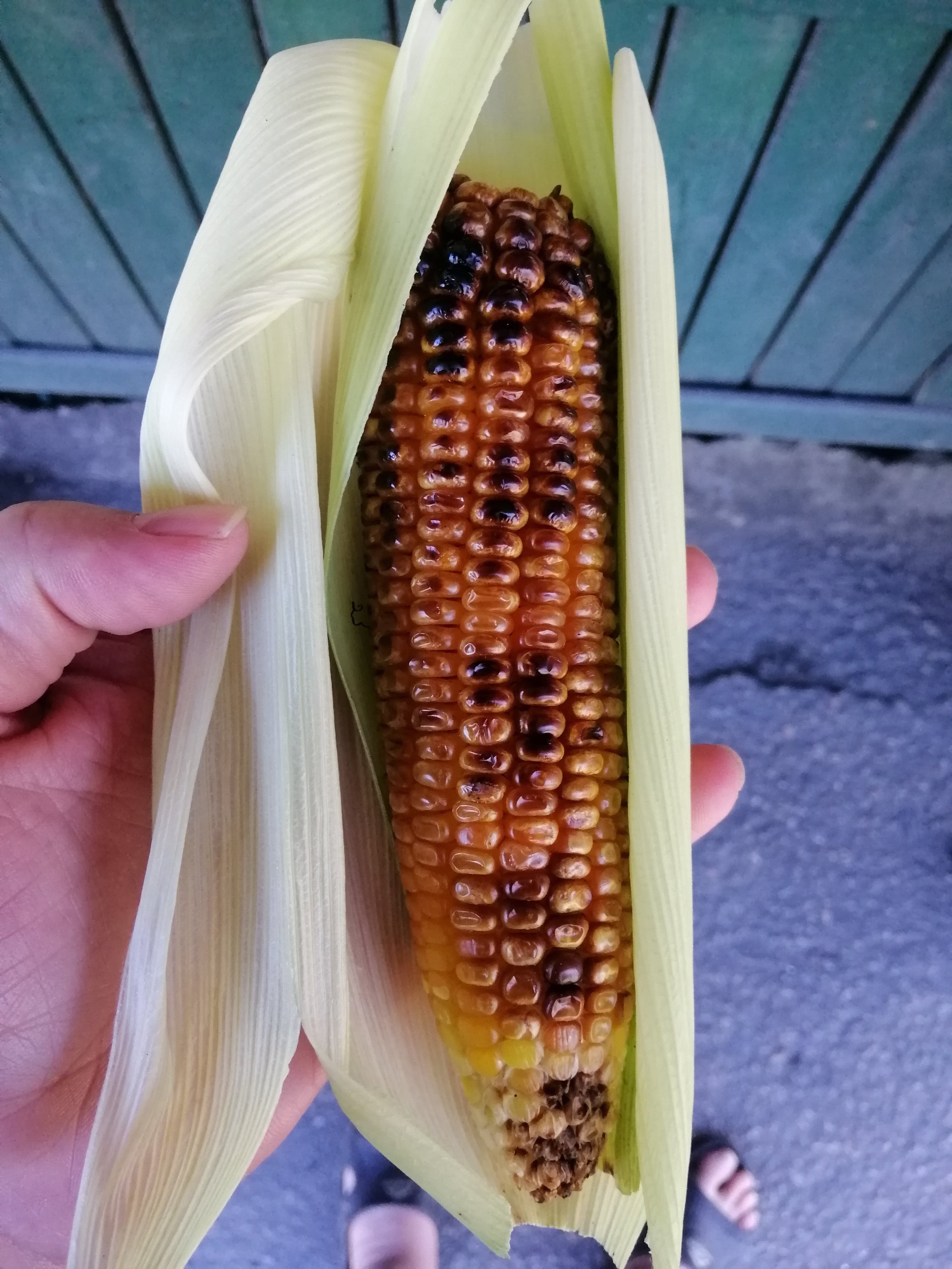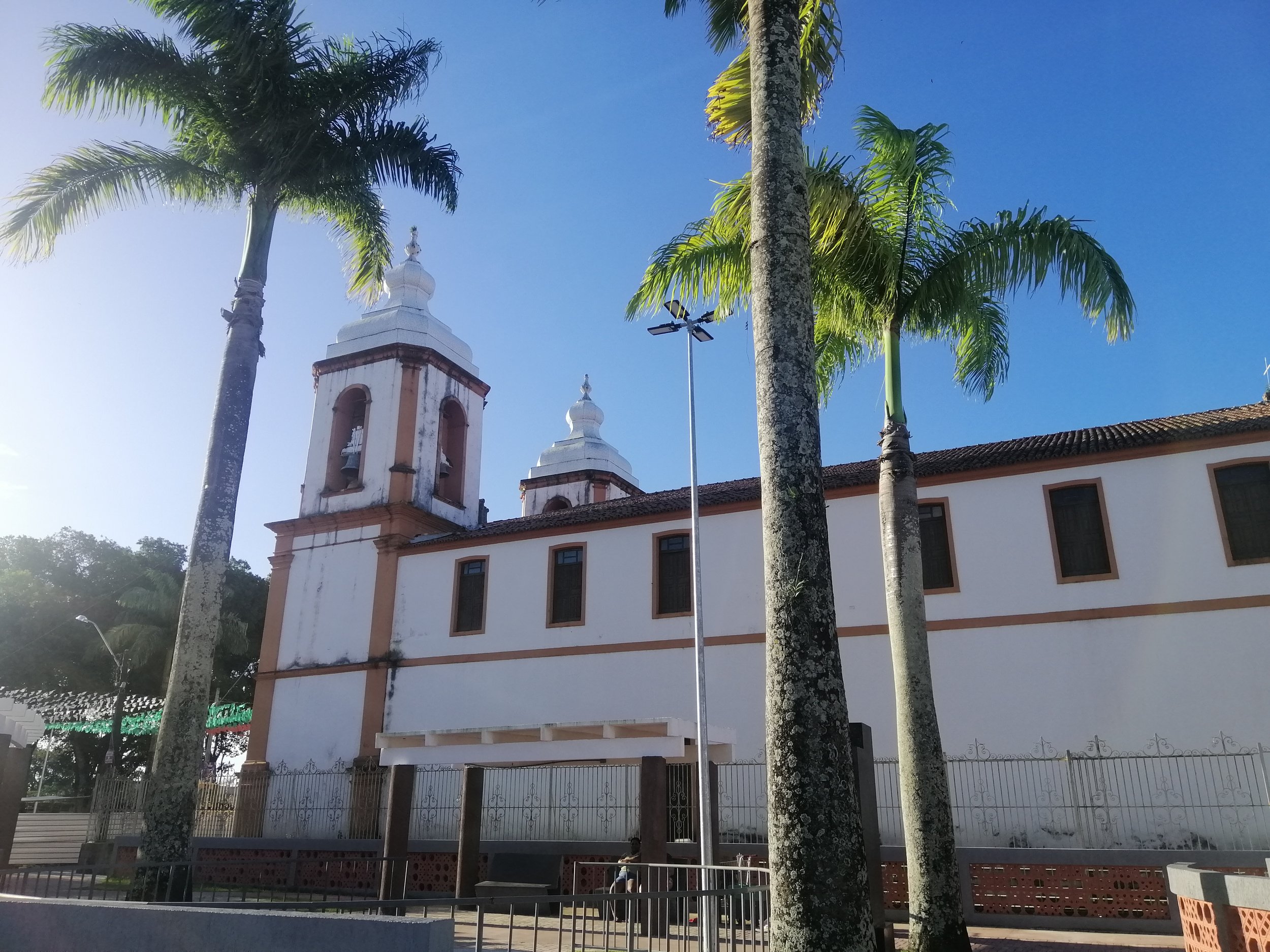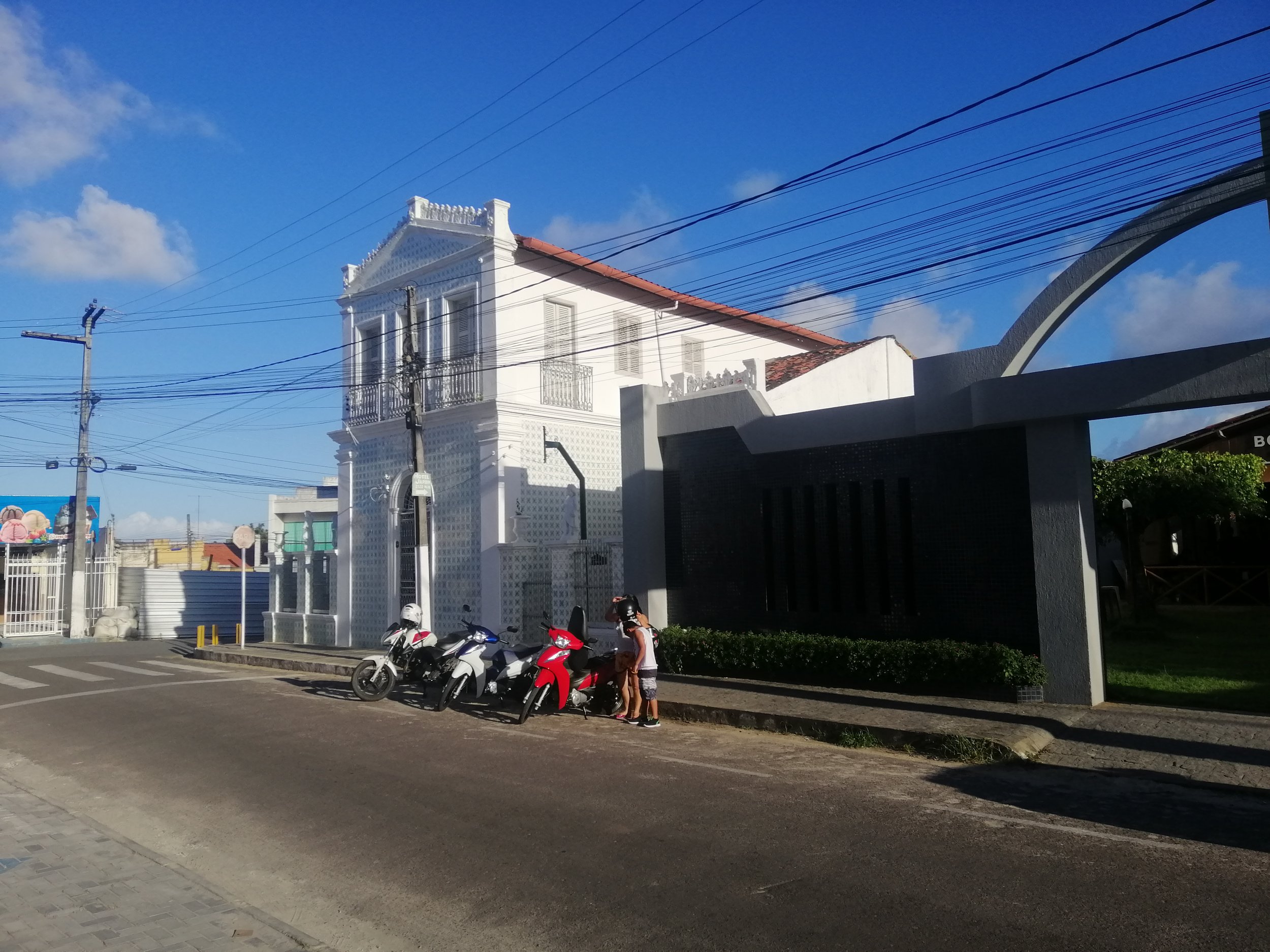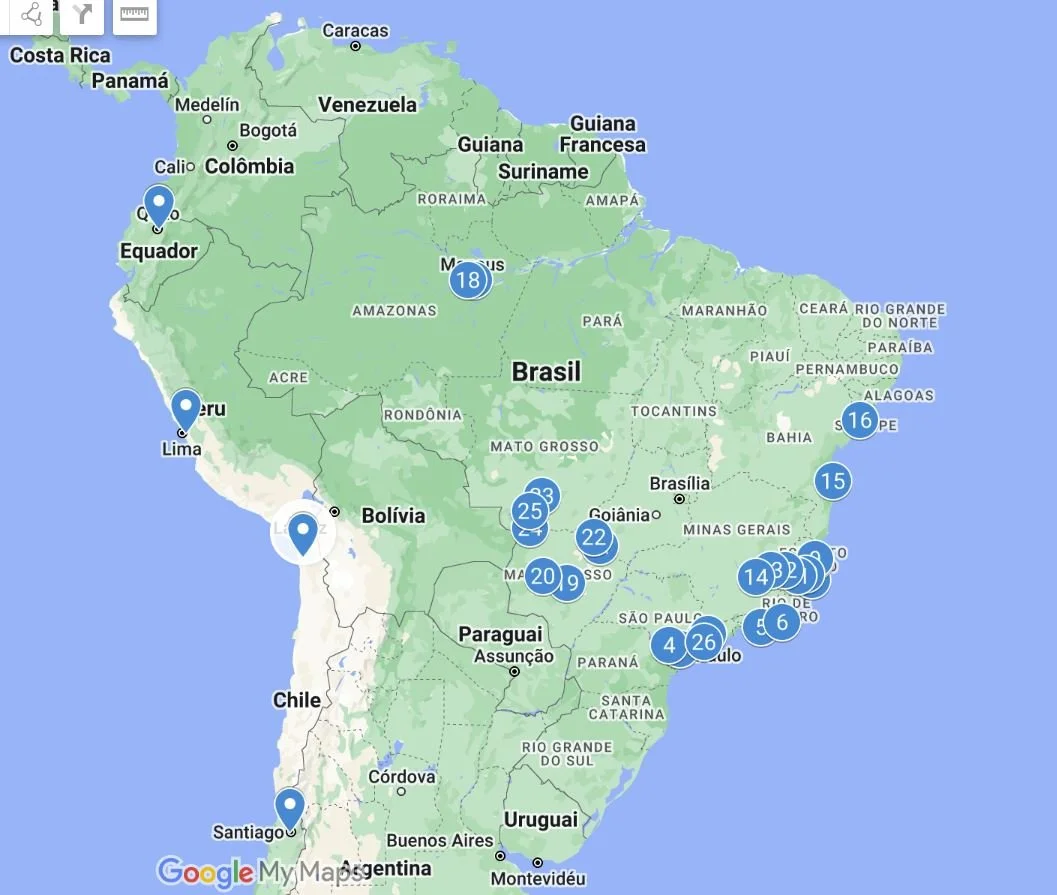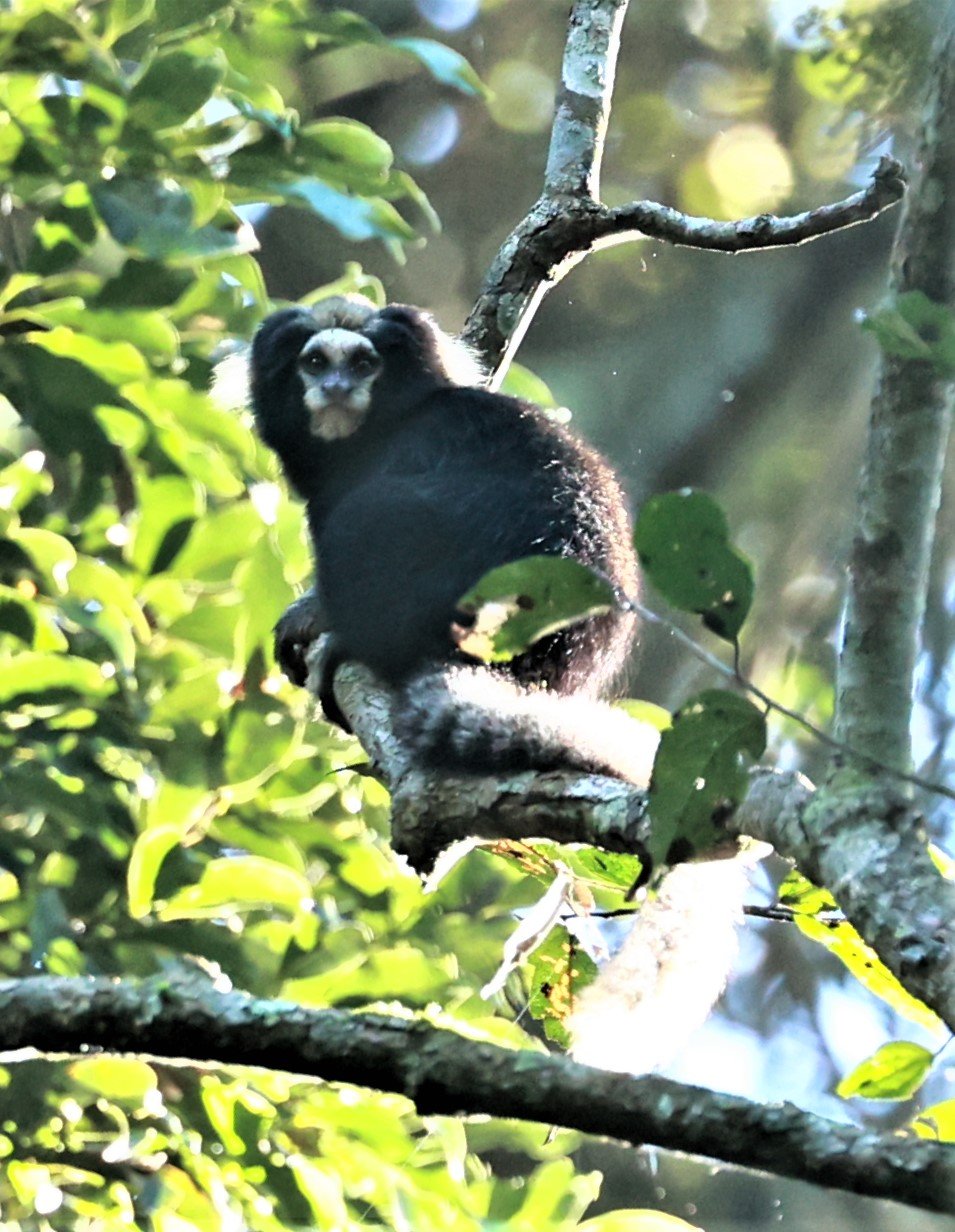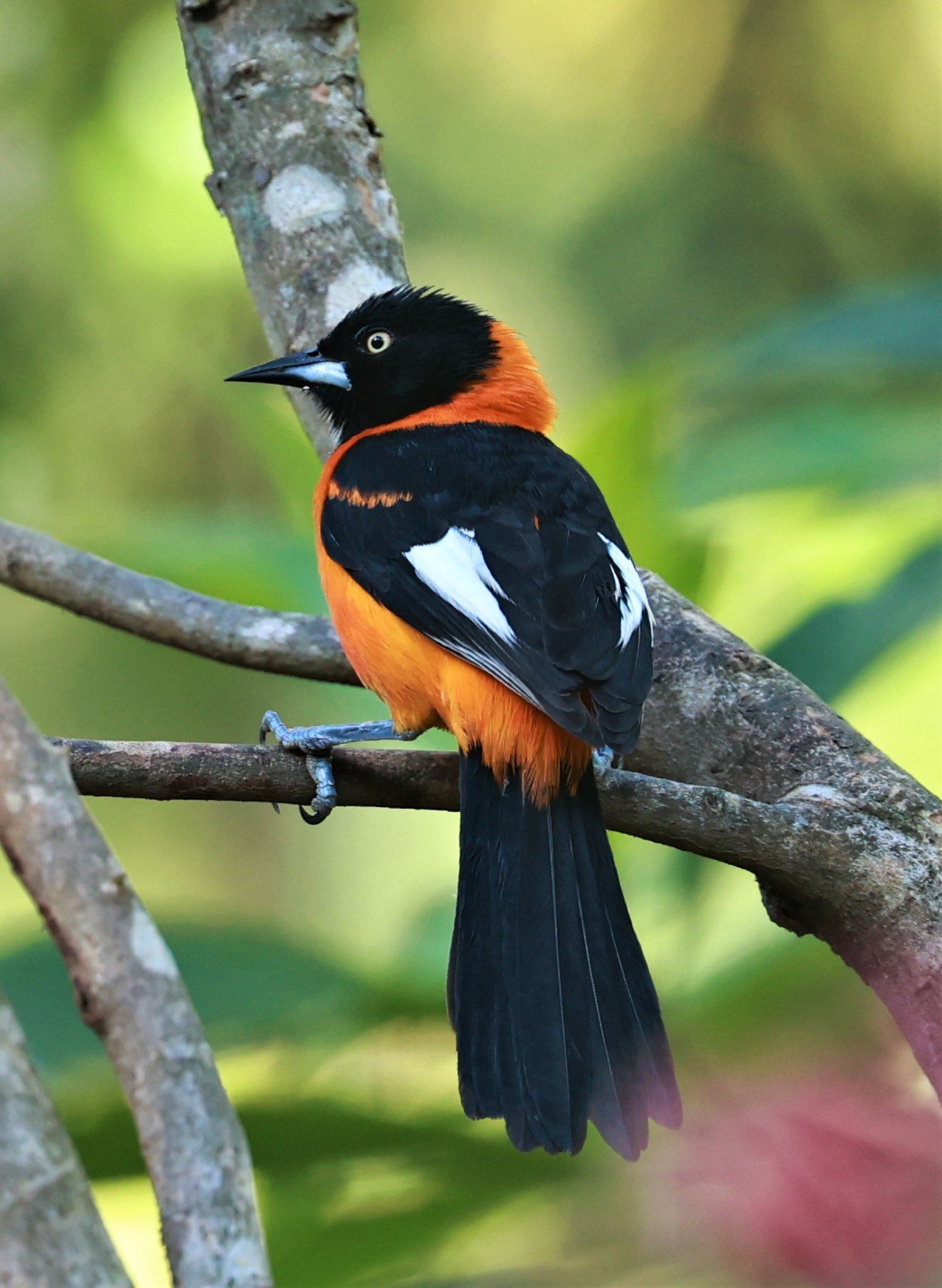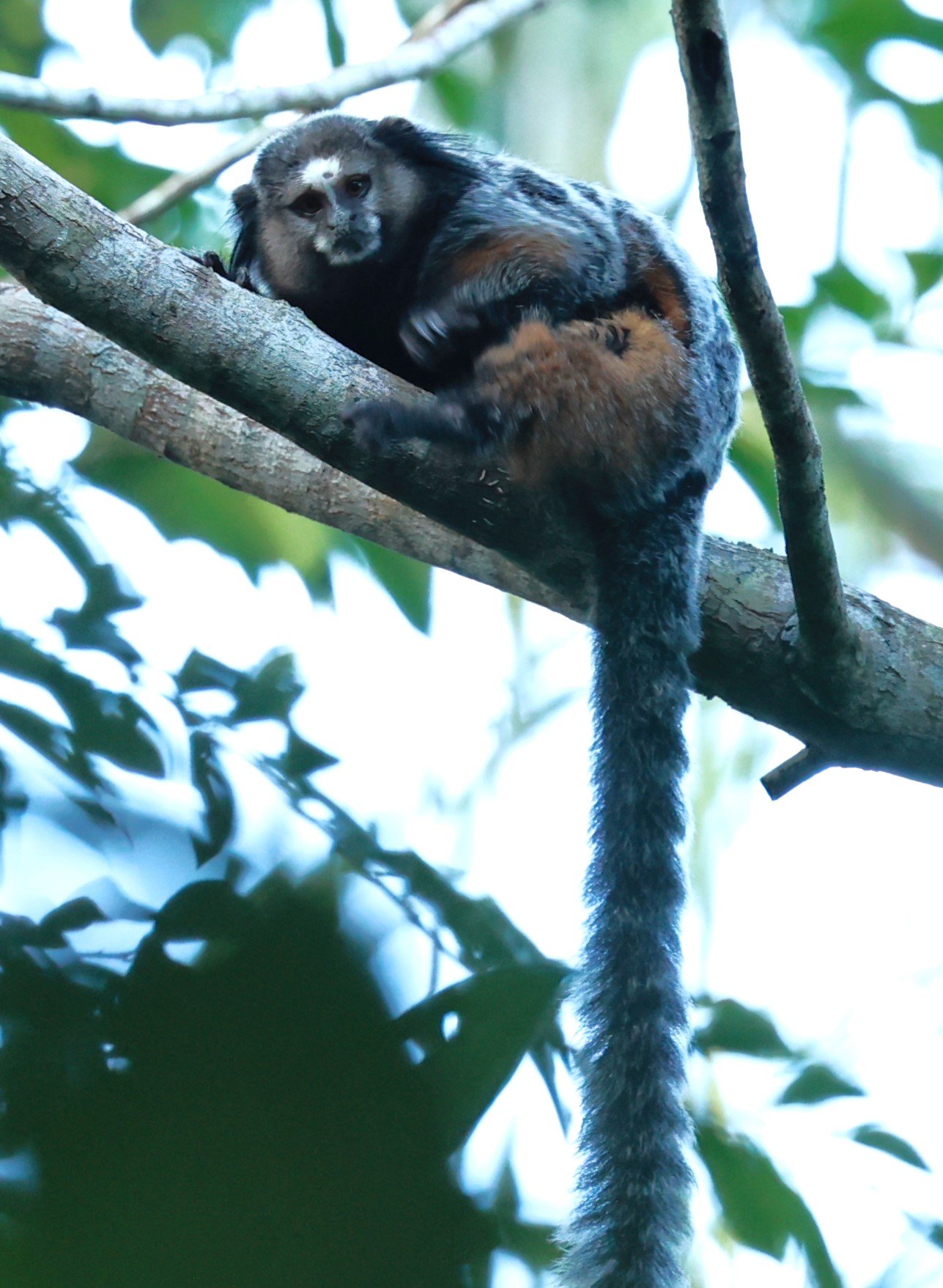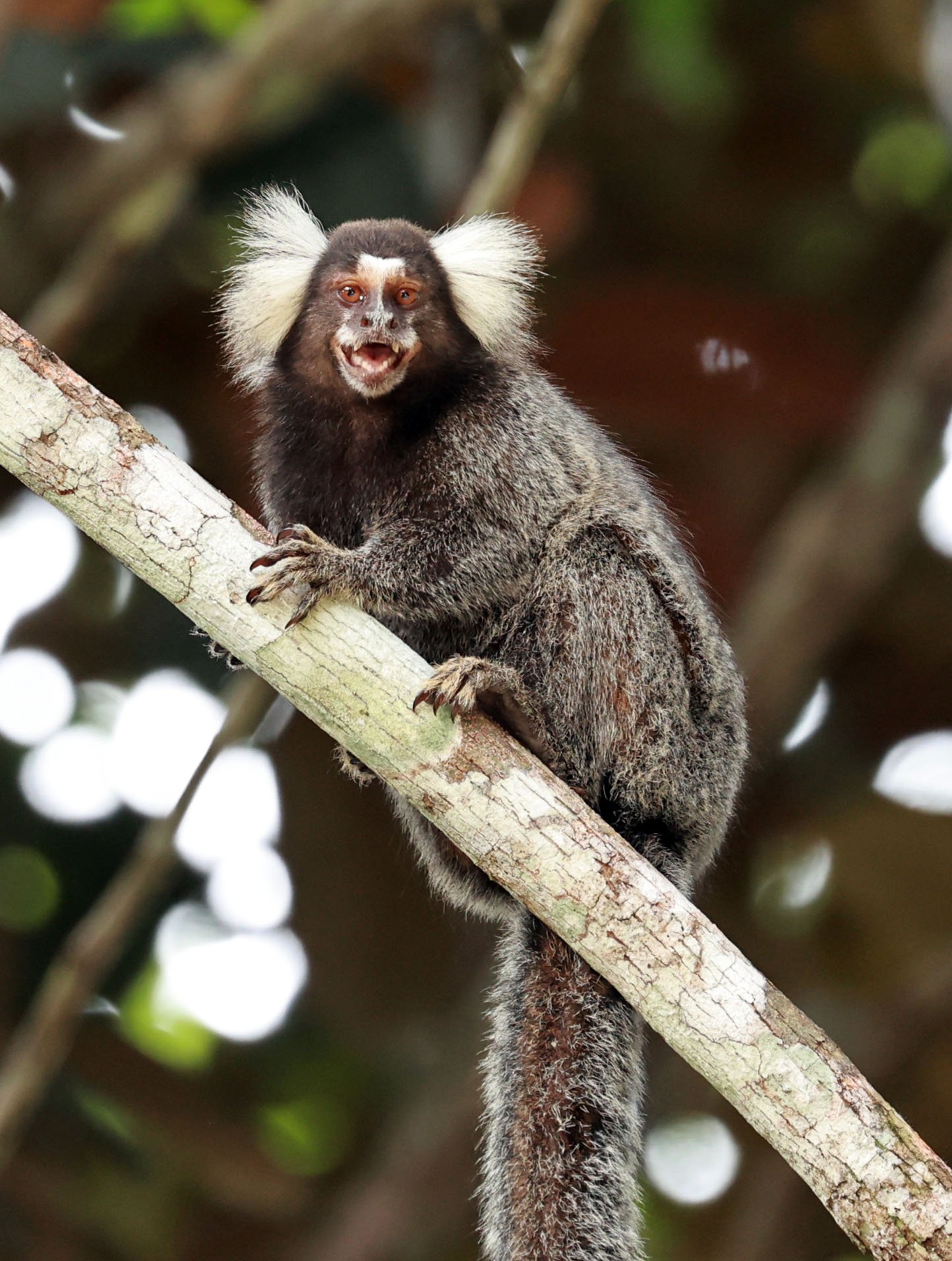
Expedition to Brazil’s Mata Atlantica
Segment #1 of the Great Primate Safari of 2023
25 June through 15 July, 2023
Finally I was able to return to South America and attempt to do some of the routes I had taken in the early and mid 90’s but this time with proper guides and better camera gear! And of course with a structed target list. Brazil was supposed to be my expedition in 2019 or 2020, but that tiny little virus changed everything and caused a delay. And as I aged, and time began to tick down before I have to retire and my income becomes less predictable and far less than it is today, I decided to do a major two-month expedition to three countries in South America to see as many of the amazing fauna as possible.
So with the help and expertise of Regina Ribeiro and Marluce Boute of Boute Expeditions, Xavier Munoz of Neblina Forest and Budget Rental Car, Chile, I planned for nearly a year and came up with an expedition plan that was to take me to Brazil’s Mata Atlanta (Atlantic Rainforest), Brazilian Amazonia, the Cerrado and Pantanal as well as Ecuadorean Andes and Lauca, Chilean Altiplano. Of course there are too many amazing locations on the continent to put in to a short two-month expedition, we all worked hard to try to provide experiences in most of the major biomes of South America.
Since there is so much to cover from this mega-expedition, I am writing five trip reports on the links below:
Brazilian Cerrado and Pantanal
Link to complete species list for the “Great Primate Safari of 2023”
Link to the Birds Species List
Regina and Marluce were brilliant. I initially thought about trying to do some of the trip on my own but it became very clear very quickly that I would have been a moron to try this with the limited time I had. So I approached Regina who was highly recommended by many of my mammal watching colleagues with my main target list and she took it and a few weeks later came back with an amazing itinerary that covered nearly all of what I was hoping for. The complexity of this itinerary cannot be overstated. Intimate local knowledge was necessary to know the logistics for reaching the targets’ areas while at the same time marrying complex airline schedules and road time in to the equation. This trip had so many areas where a late or canceled flight, a road closure, a prolonged storm or any unexpected impediment could have been disastrous. But after dozens of flights and transfers, there was never one instance where the itinerary was not precisely what I experienced. And out of 49 days in the field, I had 49 days of good weather!!!
At first glance the trip itinerary seemed a bit risky in that it allowed for very short periods of time in many of the locations where my targets could be found. Any wildlife watcher knows that it is always best to plan a couple days at least in a location to give better chances in seeing the targets. But my time frame was non-negotiable so I basically went with Regina’s and Marluce’s plan with only very minor changes rather than cut portions of the trip out completely. There were many flights involved which saved a lot of travel time. Brazil is frickin’ huge! The below map to the right shows the main destinations for my trip:
In this report, I will focus on the fauna of Brazil’s Mata Atlantica, one of the most fragmented and endangered biomes on the planet.
My expedition started on 23 June, 2023 when I boarded my Qatar Airlines flight from Bangkok to Qatar and eventually to Brazil’s Guarulhos international outside Sao Paulo. Total time from door to door – BKK to GUR – 36 was hours, which included a lengthy layover in Qatar International, perhaps the largest Gucci, Louis Vitton outlet on the planet. I could barely afford a soda! I’d never seen a duty-free Ferrari before….Not sure how one takes it home – carry on? Needless to say, the travel time from Thailand to Brazil is a bit overwhelming. Pure exhaustion combined with the jetlag made spending one night in Sao Paulo the logical thing to do.
Image to the left is my first rainforest - the Qatar International Airport tropical garden. The above image is of my first breakfast in Brazil. This was the typical selection of food in most of my lodging situations. The image on the right is the endless city of Sao Paulo upon our approach for my arrival on 24 June 2023!
Nazare Paulista
One of the forest fragments in the Nazare Paulista region of Sao Paulo state.
Some sixty kms from Sao Paulo, my expedition to the Mata Atlantica of Brazil began in the lovely countryside of the Nazare Paulista, my very first exposure to Brazil’s Atlantic Rainforest, one of the world’s most biodiverse and incredibly disrupted biomes. As you see throughout this report, the rainforests of this region of Brazil are packed with countless endemic species and incredible ecosystems, but sadly, due to unregulated and unabated development, there is less than ten percent remaining and most of what is remaining is in small forest fragments with barely enough habitat to support the rare and endangered species that find their homes there.
The drive from Sao Paulo was barely a couple hours and we immediately found our way to a forest fragment near the town of Nazare Paulista, where we began our search for target number one – Buffy-tufted Marmoset. As soon as we parked and strolled along the narrow lane for a couple hundred meters, Regina and Eduardo Castro (my other local guide) heard the high-pitched squeaky sound of the marmosets! I was completely clueless at that stage but as soon as I knew what to listen for, I soon became an active participant in the search. It took a couple minutes to see them but I finally noticed a small, squirrel-sized figure in silhouette deep in the forest – my first wild marmoset! We worked this group for awhile and ended up with some better views. Truth be told, the only other Marmosets I had ever seen before were in the deep and depressing wildlife sections of Bangkok’s Jatujak Market, where they are sold as pets. Finally one in its natural habitat!
That feeling of getting your first target species on an expedition is something that all mammal watchers know and love. There is a sense of both relief and accomplishment. And that feeling afterward when you have it under your belt and can now carry-on searching for secondary targets and even birds and other critters! And that is what we did – the birding in this patch was quite amazing. We ended up with about thirty species of birds, many of which were fairly rare according to Regina and Eduardo.
We worked the area for a couple hours and ended up with a couple more targets – Ingram’s or Southeastern Squirrel. There were a couple scurrying around the trees near a small factory. A Brazilian Tapeti dashed across the road as well.
We stayed at Pousado do Moinho, a fantastic place with its own private fragment of the Atlantic Rainforest. This place is filled with fauna, some of which we were fortunate enough to see or at least here. One of my main targets for the Pousada was the Black-fronted Titi, which were actually quite common there. Sadly, while we heard three groups quite well, we were denied any decent views. The brush was rather thick and we could not get a close as we wished. Hearing Titis though is quite a thing. The song of many primates can be quite melodic and soothing in some cases, but Titis…holy hell…about as manic and tense as you can imagine. (Here is a link to the sound I was able to pick up).
Eduardo is an outstanding herping guide and while we were together I was treated to many amphibians. Reptiles were a bit rare as the temperatures during this time period were absolutely frigid – many of my nights in the Mata Atlantica actually neared or passed the freezing point! (Here is a link to the herps of the expedition here). We did some night driving around the local forest fragments and came across some nightjars and owls but no other mammals.
Link to the Birds of Nazare Paulista
Tropical Screech Owl (Megascops choliba) - Nazare Paulista, Sao Paulo )
Scinax perereca - Nazare Paulista, Sao Paulo
Green Ibis (Mesembrinibis cayennensis) Nazare Paulista, Sao Paulo State. This ended up being the only one seen during the entire expedition.
Red-ruffed Fruitcrow (Pyroderus scutatus) spotted in Nazare Paulista, Sao Paulo State. Evidently a rarity.
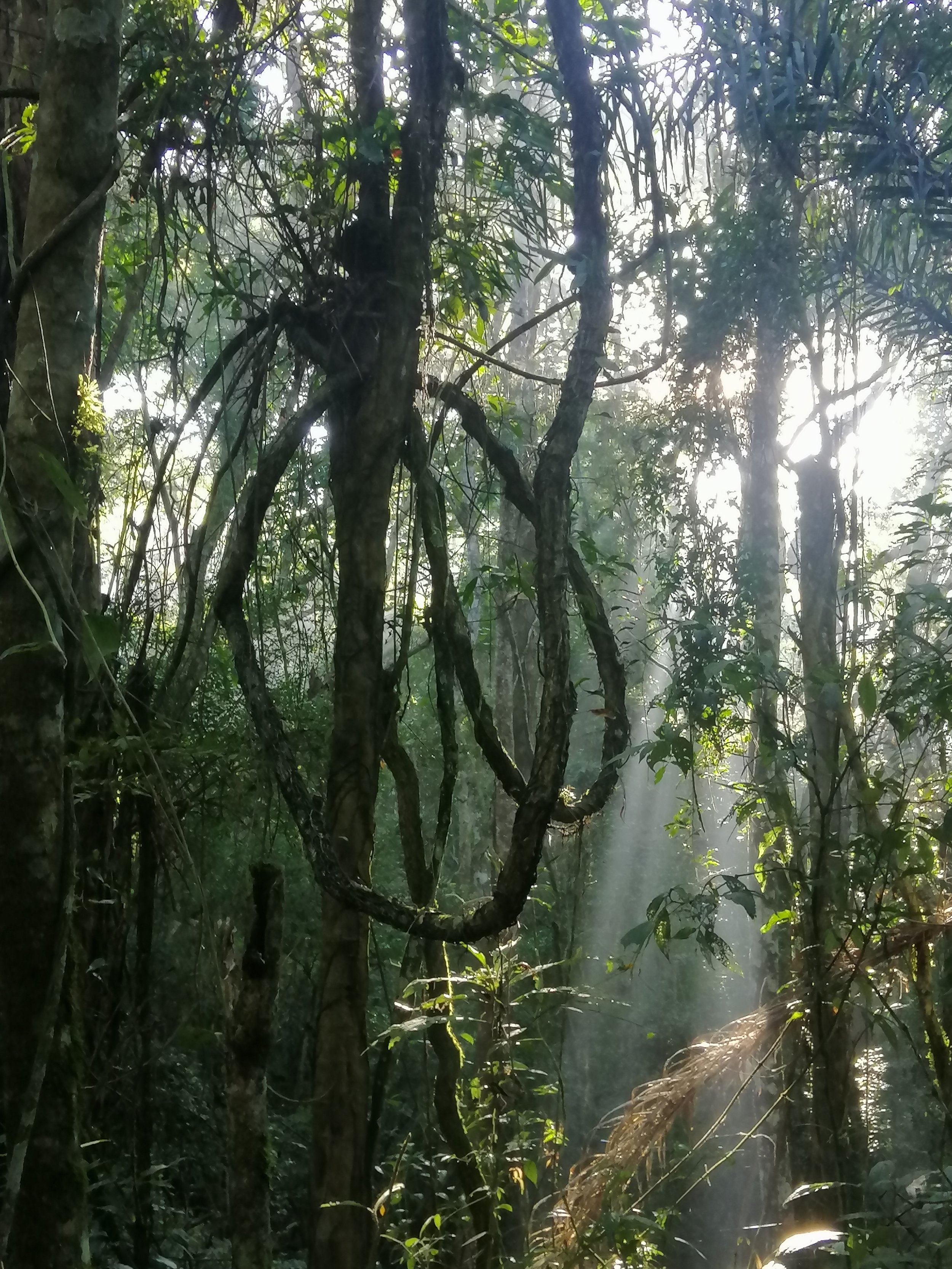
Lianas in the Mata Atlantica
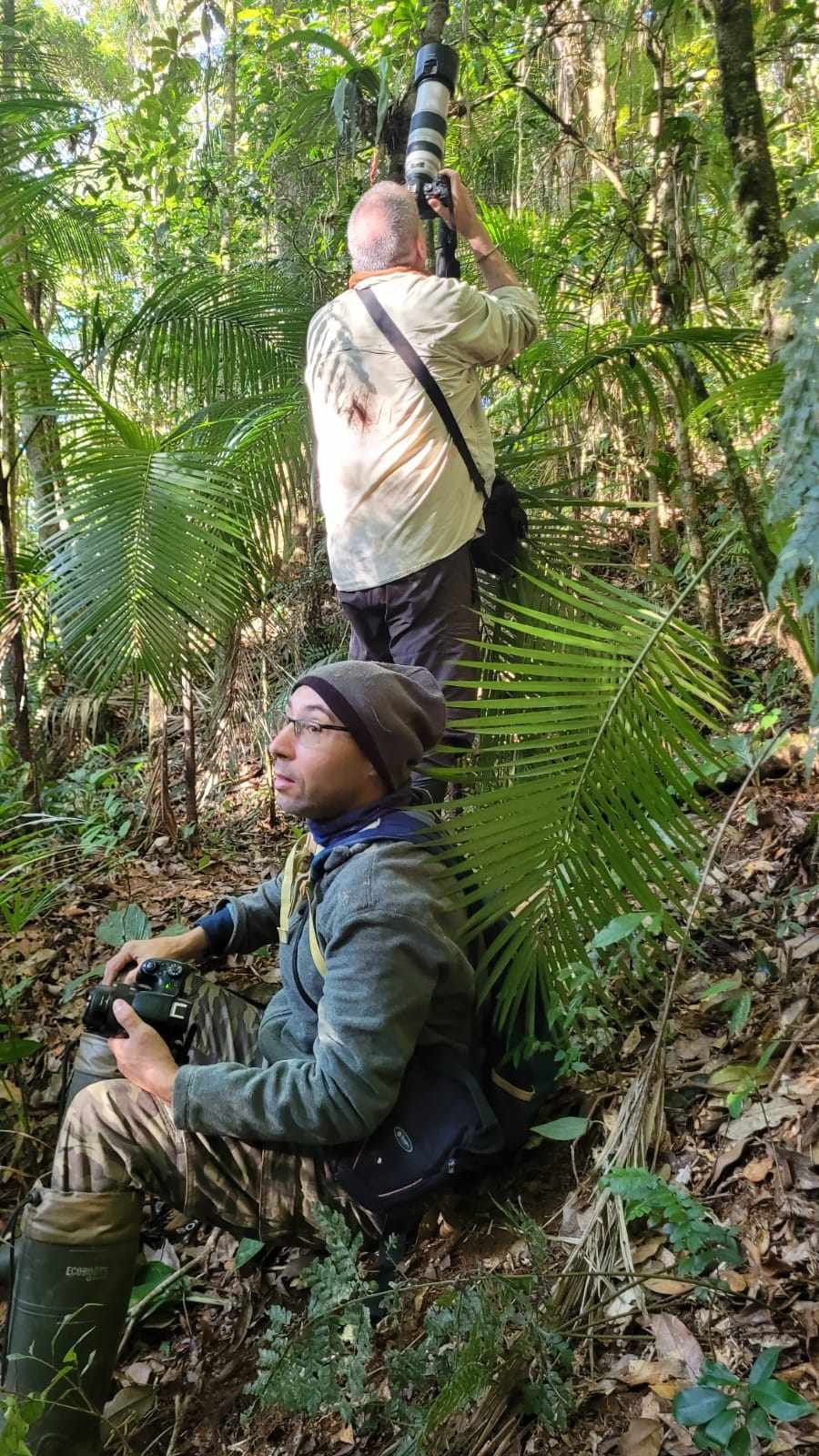
My guide, Eduardo scanning for wildlife.
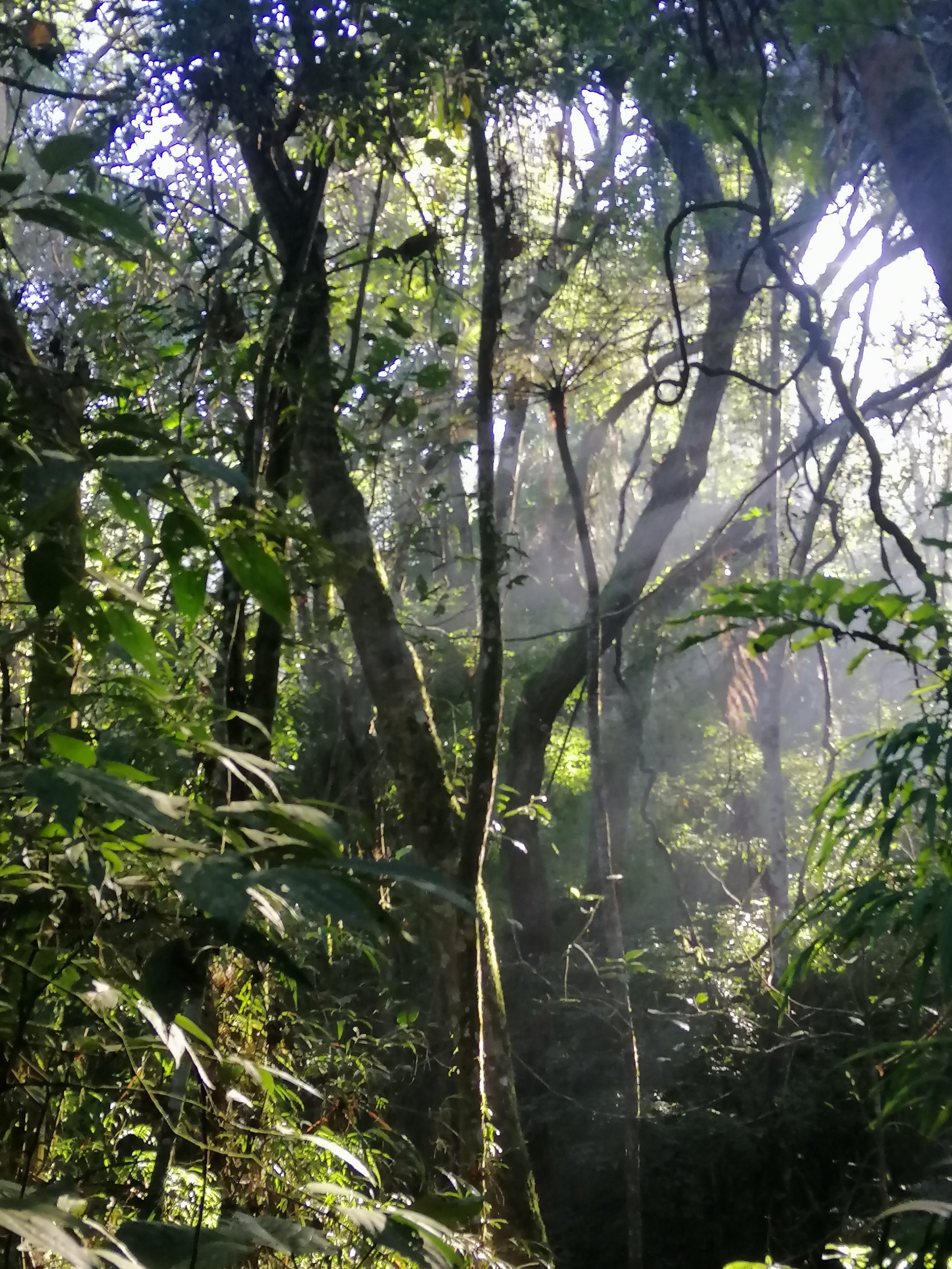
The density of the flora in the Atlantic Rainforest.

Regina, Eduardo and me after a successful trek.
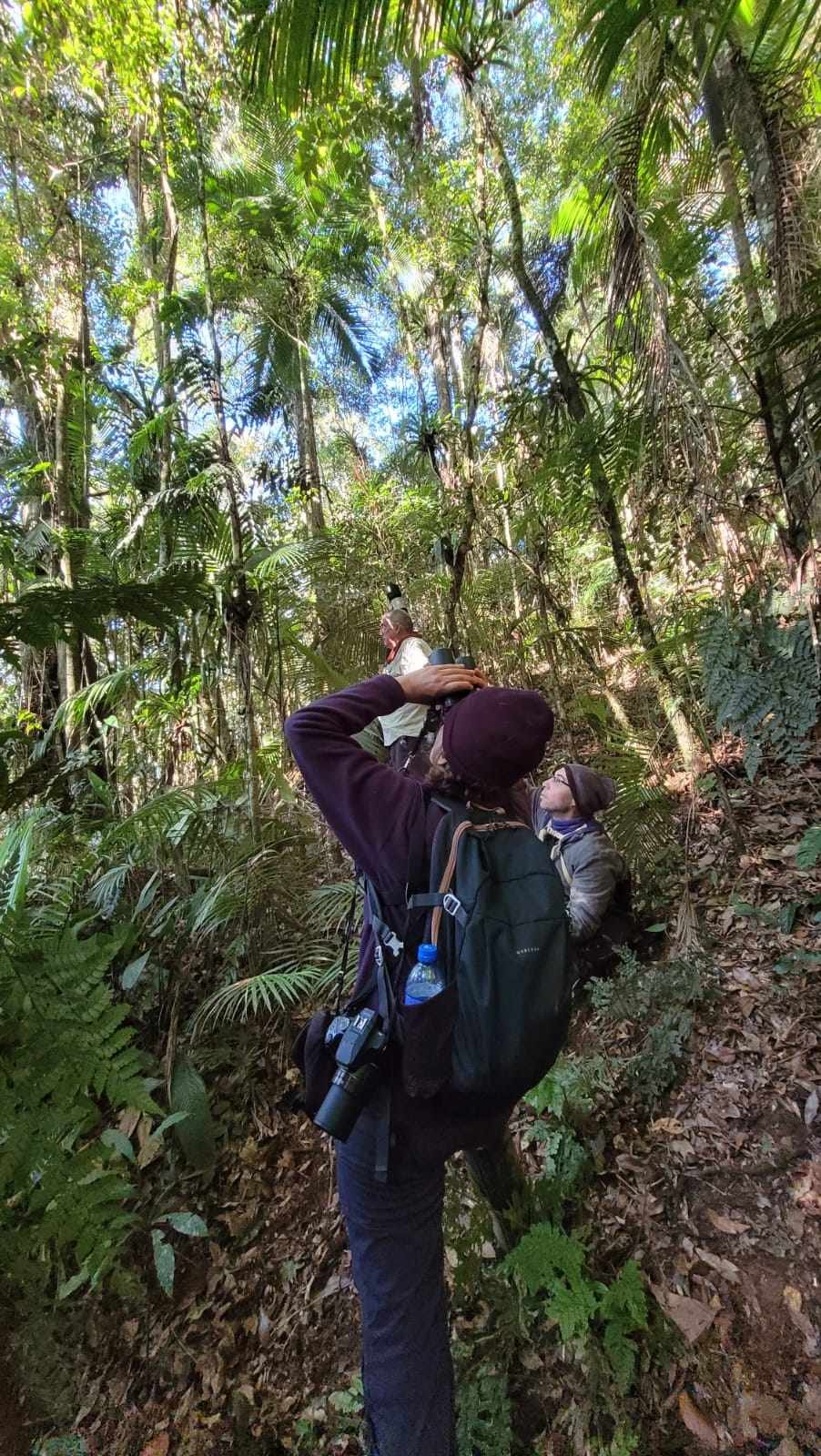
Searching for primates! Regina is a pro!
Carlos Botelho State Park
Some four hours from Nazare Paulista, we found ourselves in one of the larger contiguous stretches of Atlantic Rainforests in Sao Paulo State, which serves as a corridor for the wildlife and genomes that remain in the region. Here we were heading to Carlos Botelho State Park and targeting the endangered Southern Muriqui. As we arrived in the afternoon, we did not try to find the monkeys although we did hike the boardwalk trail a bit and learned the lay of the land and the probable regions of the park where our local guide, Edipo, thought we’d start our trek the next day.
The park is a spectacularly forested area with small hills and valleys with steep slopes. The park operates a brilliant ecotourism activity whereby the “Monkey Safari” guides take relatively “fit” individuals in to the forest for a three-hour trek, usually off trail and into the deep ravines, to see the Muriqui. Funds are used to support local naturalists and the preservation of the species in the park. I highly recommend this experience.
Our first afternoon was spent mainly exploring the areas around the main headquarters and the avifauna that comes in in the late afternoon. As usual, Regina’s and Eduardo’s sharp eyes were great in finding many species of birds. Our evening was spent on a night walk into the forest. While we did not see any mammals that evening, Eduardo was great in pointing out lots of amphibians and insects and arachnids, all of which he knew the classification down to species!
Up well before sun-up, we made our way to the trailhead to start our trek to hopefully see the Muriqui. The Monkey Safari guide knew exactly where to start as he followed the group the night before to see where they bedded down. So we B-lined it straight down a very steep hill deep in to one of the ravines. The route was slippery and a bit treacherous but manageable for sure. My main concern was every step down the hill was one I’d have to take right back up eventually.
After a couple hundred meters trek, our guide stopped us and pointed upward, saying in a whisper that the Muriqui were directly above us but had yet to stir for the morning. He directed us to wait on either side of the tree where they were sleeping explaining that when they finally do wake up, they will take a dump and a piss that would land on us if we were too close to the bottom…..Only later did I find out how true that was when I was both pissed on AND shat on by one that came my way after waking!
Rather than a quiet, relaxed waking for the Muriqui that morning, our group was surprised by a few Black Capuchin who invaded their space. Now this immediately divided the Muriqui group causing them to go in all directions. I thought this was going to seriously jeopardize our ability to get good views of the Muriqui, which it did initially. What it did do was to force us to travel quite a bit deeper into the forest to try for good views. Walking in this ecosystem was at times challenging or sure. Firm ground quickly changed to swampy muk that someone of my weight would easily sink up to above their knees! And of course I did exactly that….fell flat on my face…all in an effort to get better views of the Muriqui. Luckily no one saw my embarrassing fall…Thankfully I eventually had wonderful and prolonged views of the monkeys going about their daily lives. Mission accomplished by 8:30AM!
I highly recommend the Monkey Safari experience at Botelho. Do check on the timing of your visit as there are times of the year when the trek is not offered for various reasons - breeding season, distance of trek, rainy season when the steep slopes are quite dangerous, etc.
Here are links to galleries for:
Opilion species - Harvestman Spider was one of the many arachnids and other invertebrates seen by keen-eyed Eduardo at Carlos Botelho State Park, Sao Paulo State
Red-legged Seriema (Cariama cristata)
Marsupial Tree Frog (Fritiziana mitus) was also seen at Carlos Botelho
Black-throated Trogon (Trogon rufus)
Slaty-breasted Wood-Rail (Aramides saracura)
Fazenda Garibaldi
Our next stop in Sao Paulo state was Fazenda Garibaldi, the location of the Black Lion Tamarin, a spectacular species of primate thought to be extinct for decades. Since 2017, a small group of Tamarins have been monitored by biologists and a cottage ecotouristic enterprise has been established to take tourists who pay to see these lovely creatures in what remains of their natural habitat. We slept in the Fazenda, which offered basic but perfect lodging that was only a few hundred meters from at least one group of Tamarins.
Although we arrived in the afternoon, we were fortunate to find the Tamarins out along the forest edge feasting on legumes. Watching these spectacular primates carry on was awesome. Clearly they were habituated enough to allow us prolonged views while not interrupting or changing their normal behavior. We spotted quite a few species of birds as well during our afternoon at the Fazenda. Our evening was spent spotlighting the vast orange groves that surrounded the small, constricted forest corridor in search of Maned Wolves and other fauna. No wolves were spotted but we did see at least two White-eared Opossums in the trees near the Fazenda. Plenty of nightjars and owls in the area as well. Great fun.
This was sadly my last stop in Sao Paulo state and we were off to drop me at Guarulhos for a flight Rio for the next leg of my expedition. Upon arrival, I met my new guide, Eugenio Souza, an awesome man who made my next 11 days absolutely fantastic. His perfect English and great sense of humor and overt kindness and friendliness made my next leg absolutely fantastic. And he is very knowledgeable about the fauna and is an extremely gifted spotter!
White-eared Opossum (Didelphis albiventris) are fairly common at Fazenda Garibaldi, Sao Paulo State
Ochre-collared Piculet (Picumnus temminckii) was a nice woodpecker seen at the Fazenda.
Scissor-tailed Nightjar (Hydropsalis torquata)
Striped Owl (Asio clamator)
Note the gold rump of the Black Lion Tamarin (Leontopithecus chrysopygus)
Unamar & the Golden Lion Tamarin Municipal Park
After a night in Rio, Eugenio and I made our way to Unamar (about three hours or so) traveling through some spectacular landscapes. Unamar is a dusty town but it is where one can find Golden Lion Tamarins in a small community forest fragment that the township is endeavoring to cultivate local ecotourism opportunities for travelers to the region. The park is relatively small but that did not stop us from having to spend several hours searching for and hoping to see the tamarins, which were frustratingly not showing themselves.
Eventually rather than trekking aimlessly into the forest, we opted to hang around the headquarters of the park where the locals were telling us the Tamarins would eventually show up. I have to admit, after several hours of birdwatching and bee-watching (many Brazilian parks keep bee-hives on display), I was becoming a bit discouraged and resigning myself to trying again in the morning. However no sooner than I was about to give up for the day, Eugenio called me over to the side of the park that he was staking out and I was treated to a long and up-close Golden Lion Tamarin show!
When I was in the early planning stages for this expedition, I had five or six must-see species on my target list for South America: Brazilian & Mountain Tapir, Giant Anteater, Maned Wolf and Golden Lion Tamarin. Main target #1 nailed! And what a viewing it was. Several individuals came very close by and investigated us before they headed off to a fruiting tree nearby.
Birds of Golden Lion Tamarin Municipal Park & Rio de Janeiro
Rio de Janeiro
The original plan was to spend two nights and three days in Unamar to guarantee viewings of the Tamarins, but after we had such good fortune on day one, we opted to change plans and head to Rio de Janeiro so I could get a small taste of the city. This was a great move and thanks to Marluce Boute from Boute travel for making such immediate changes to the itinerary to accommodate me. Rio is simply spectacular. We spent time in the botanical gardens viewing many Black Capuchins and an introduced group of White-tufted or Common Marmosets, which we were to see in their natural habitat later in Bahia State as well.
Although the day was a bit hazy, it was a bucket list check-off for me to explore one of the more beautiful and famous cities in South America. Eugenio often guides clients through the highlights of Rio and as a local Cariocas himself knew the city like the back of his hand. He took me to many great locations in the city and gave me a local’s taste of Rio.
Common Marmoset (Callithrix jacchus) were introduced to the Jardim Botanico, Rio de Janeiro and can be seen easily in other locations in the city
A couple Black Capuchin (Sapajus nigritus) enjoying a jackfruit in the Botanical Gardens in Rio
Crested Caracara (Caracara plancus) are ubiquitous throughout Brazil but seeing them in the heart of a mega-city was fascinating. So adaptable.

Eugenio was my guide for nearly two weeks! Such an awesome travel mate. And the young man next to me was our local guide in Santa Teresa, Brener

Brener inspecting Jaguar scat in Vale.

Stickers are big deal in Brazil.

Sao Paulo upon approach.
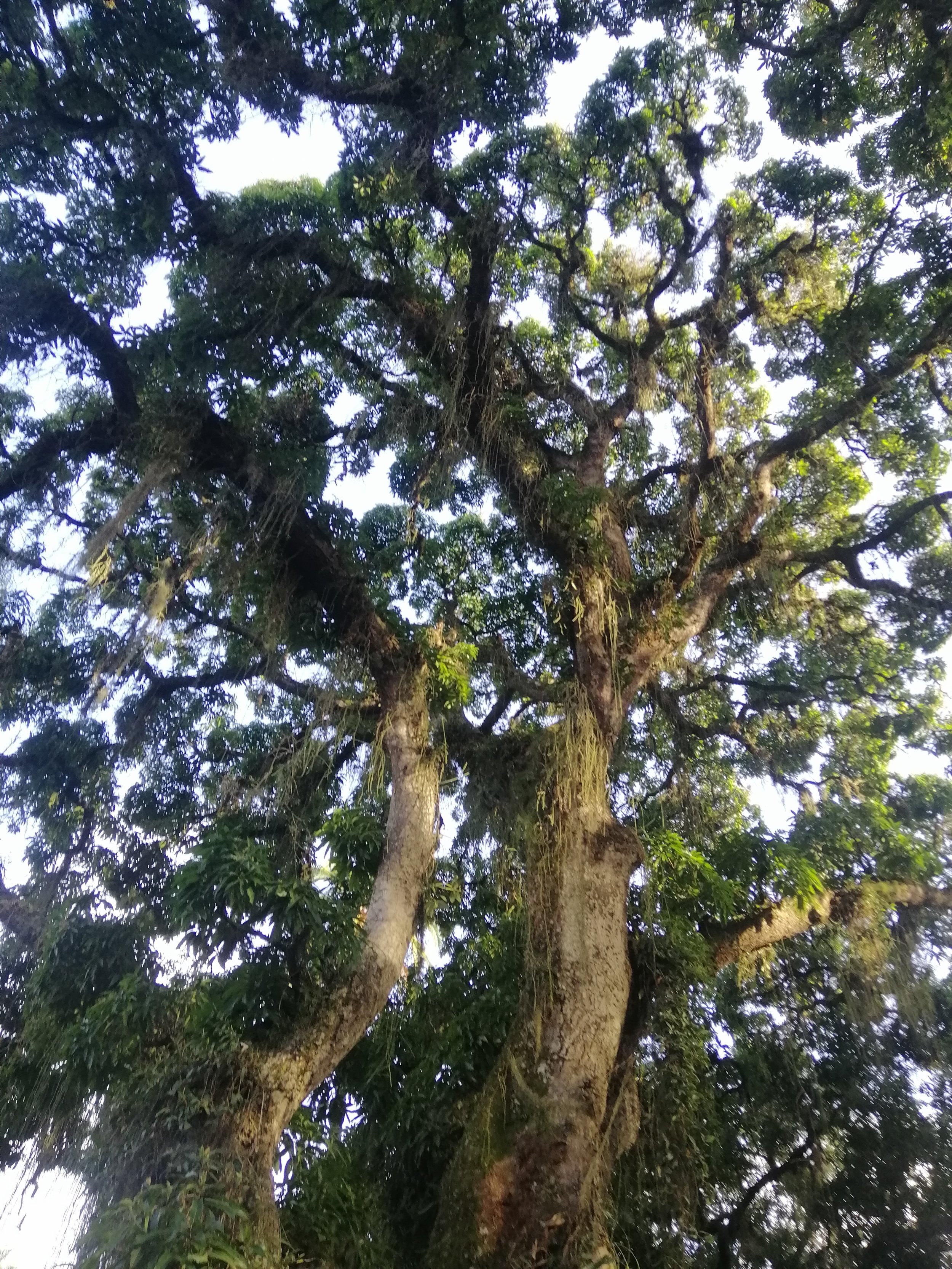
Rainforest giants in the Rio de Janeiro Botanical Gardens.
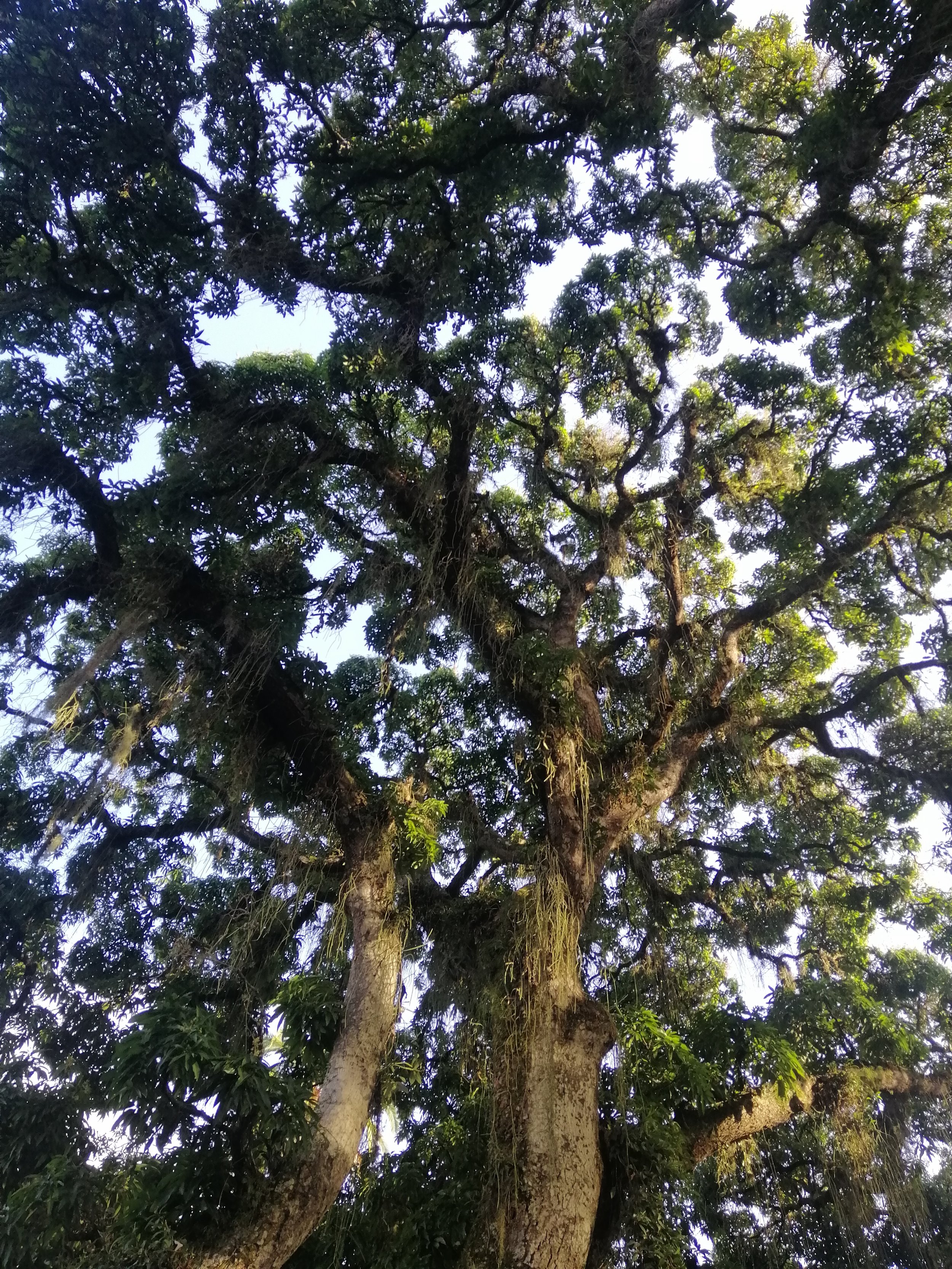
Contiguous canopy in Rio.
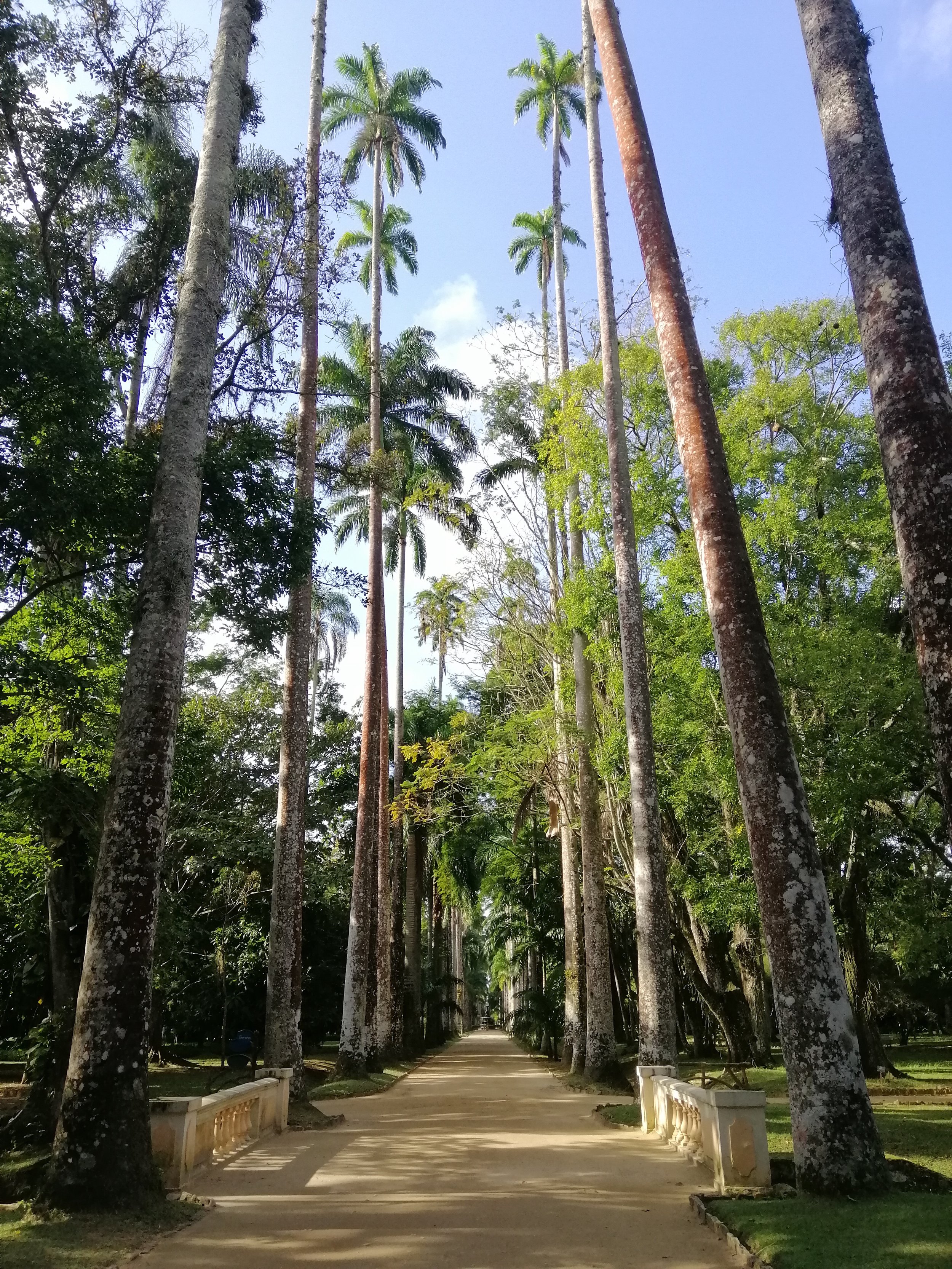
Rio Botanical Gardens
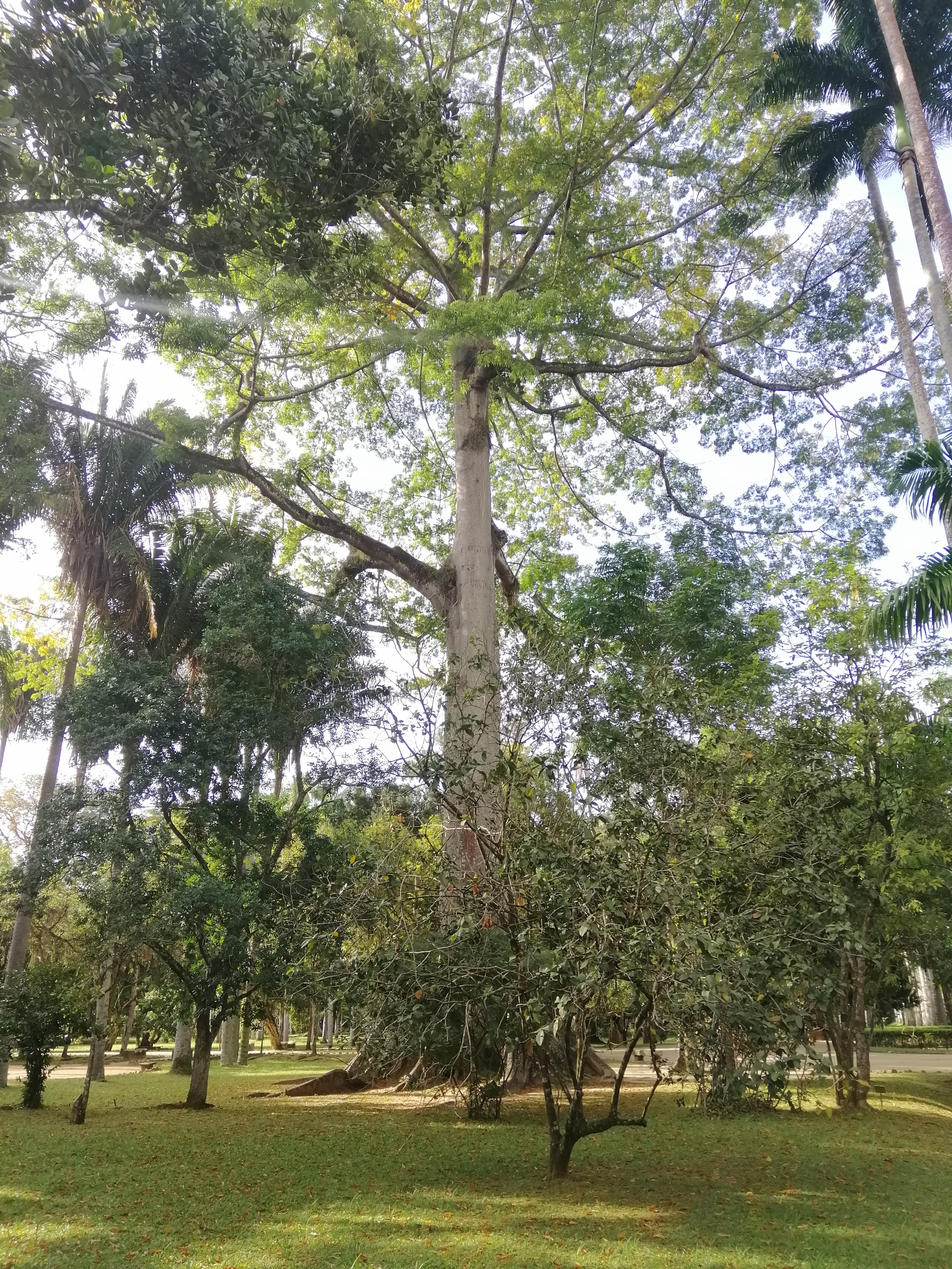
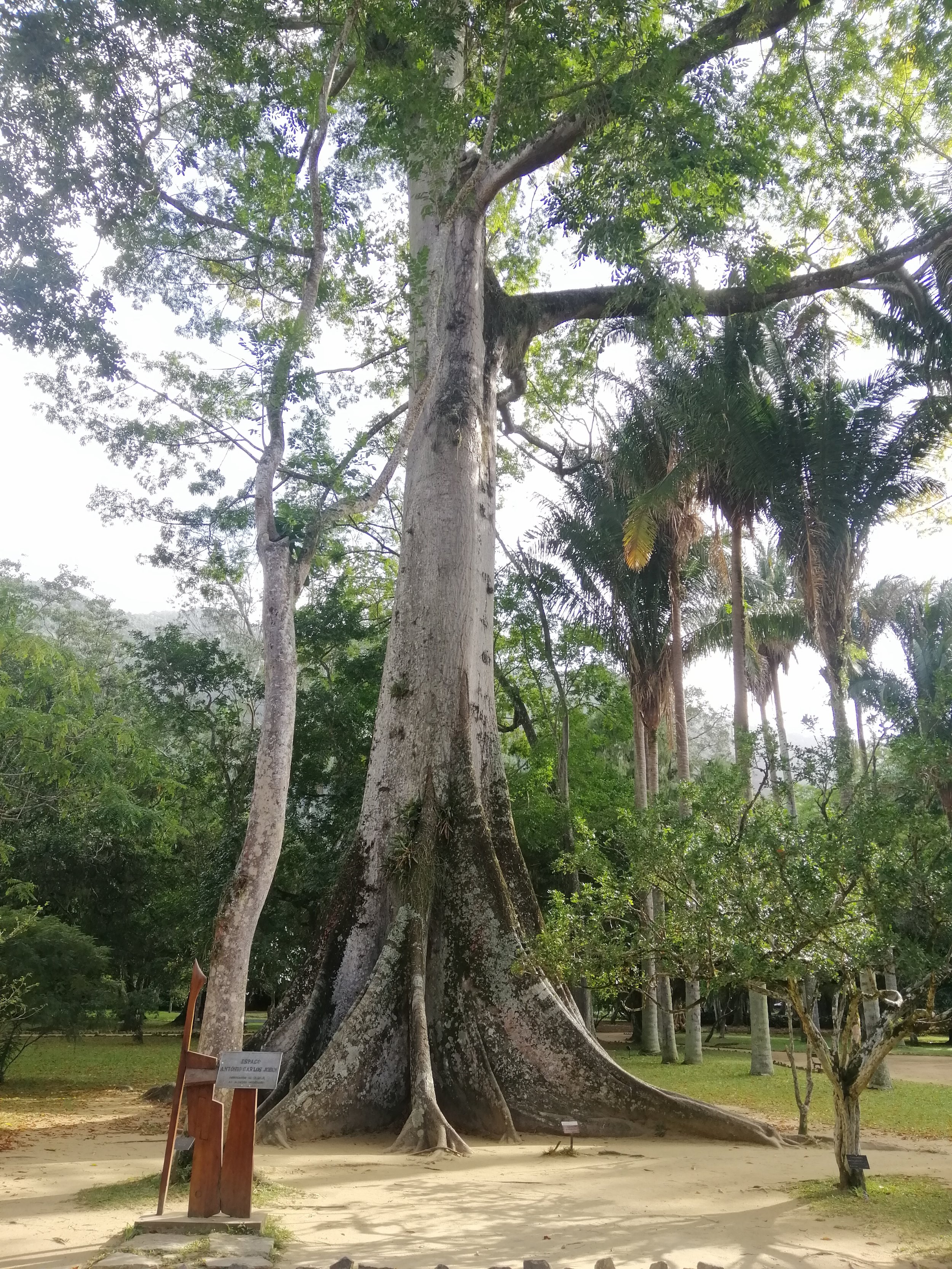
Buttress roots

I ate more meat this summer than I have in ten years in Asia!
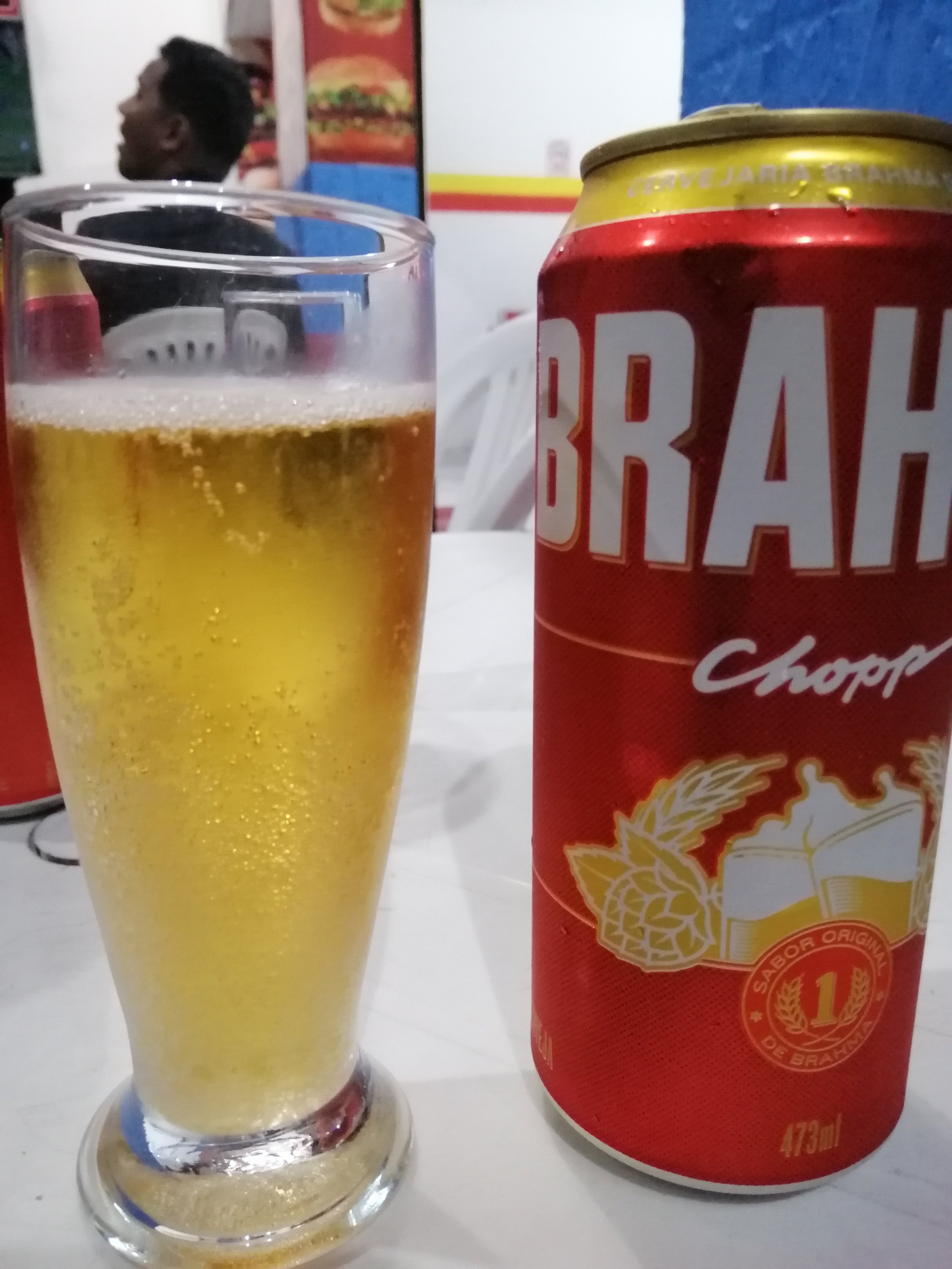
Views of Rio





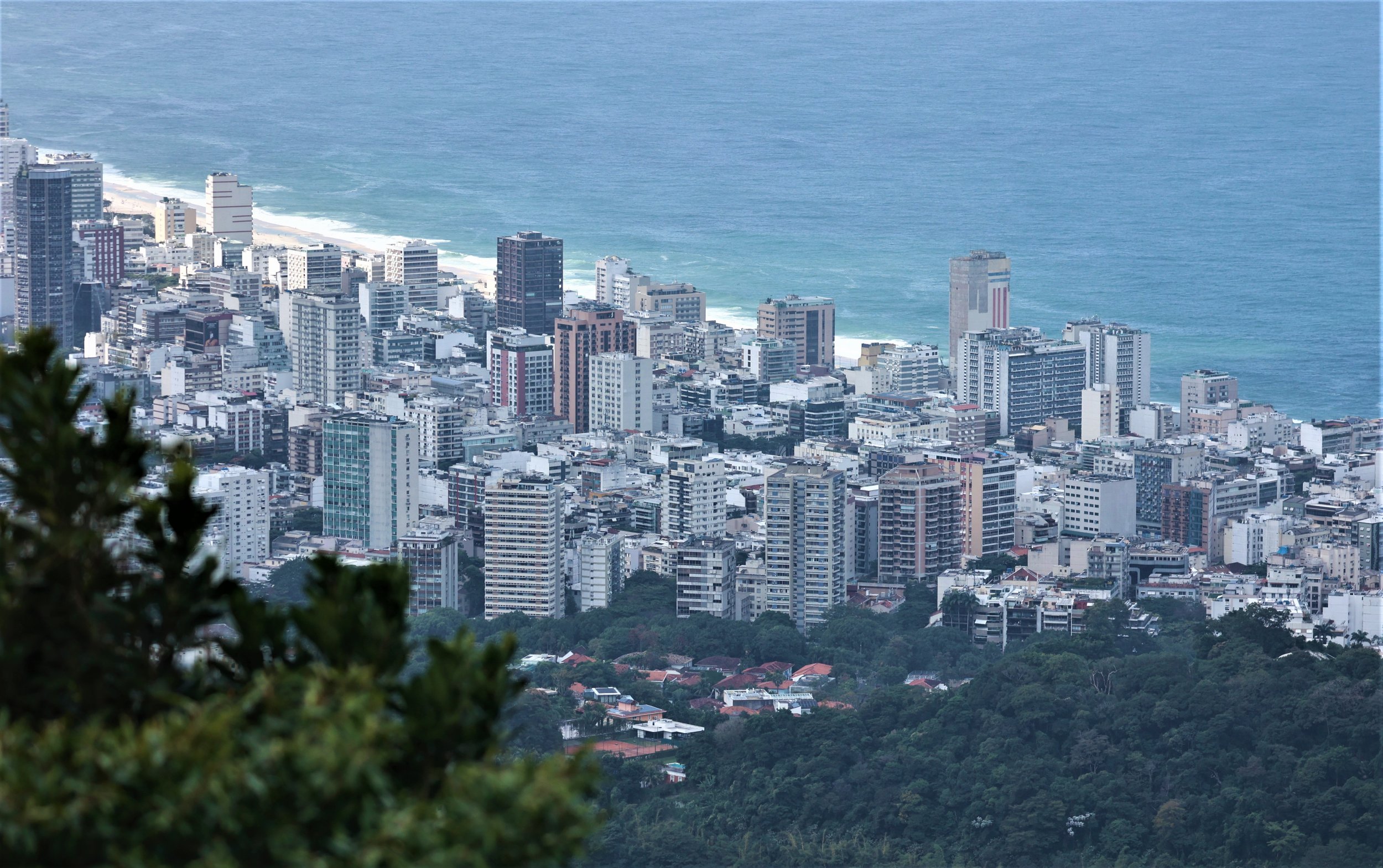







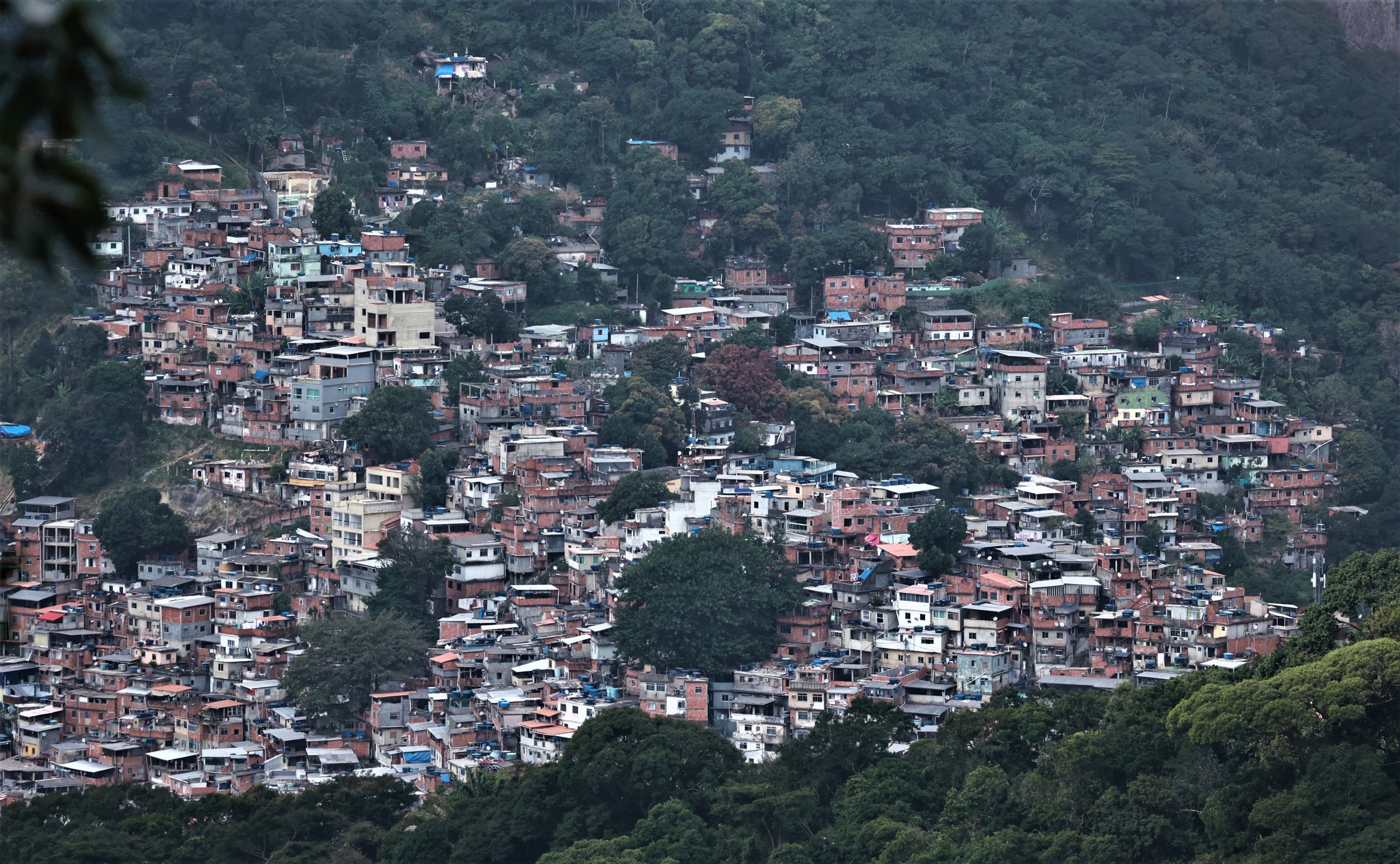



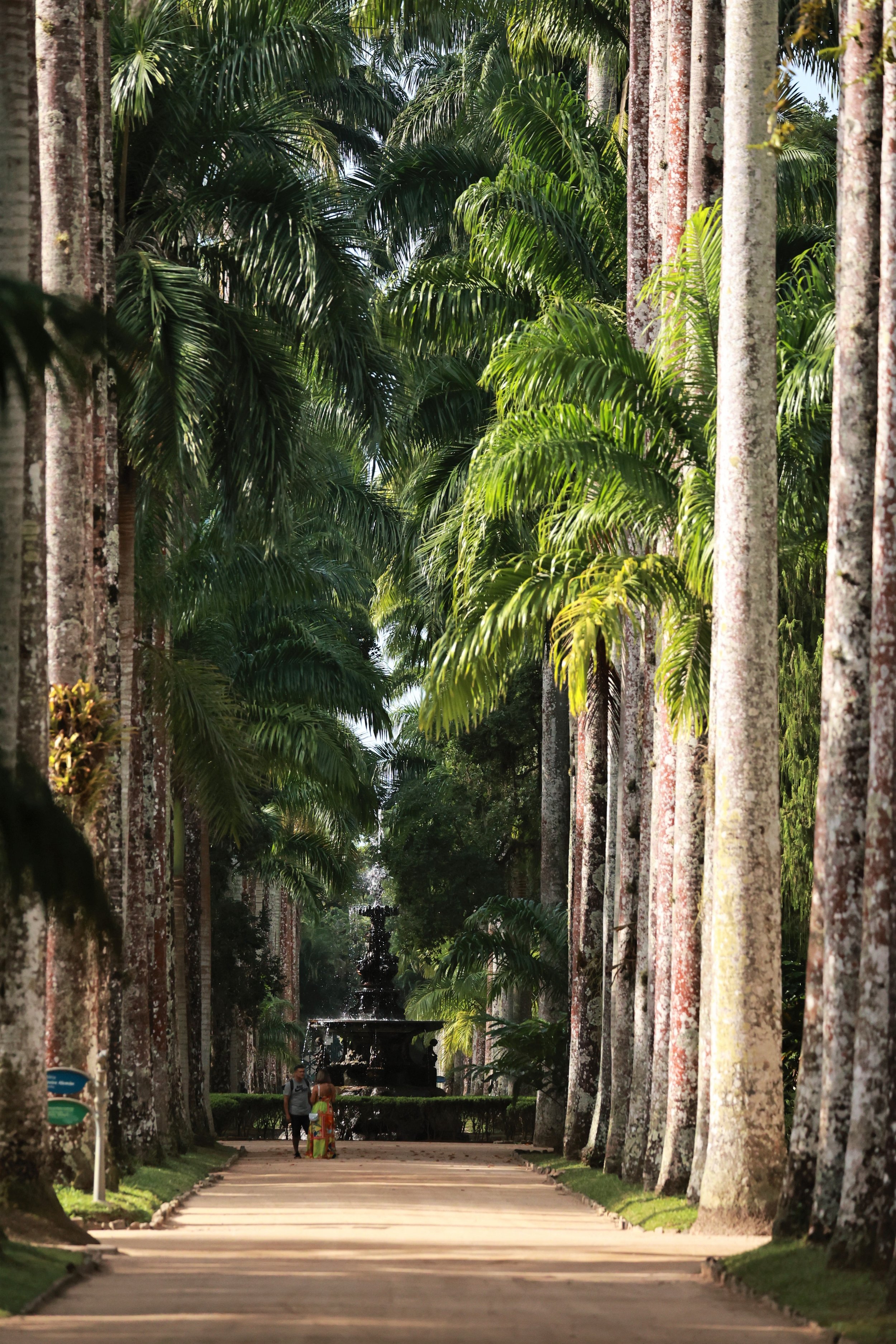
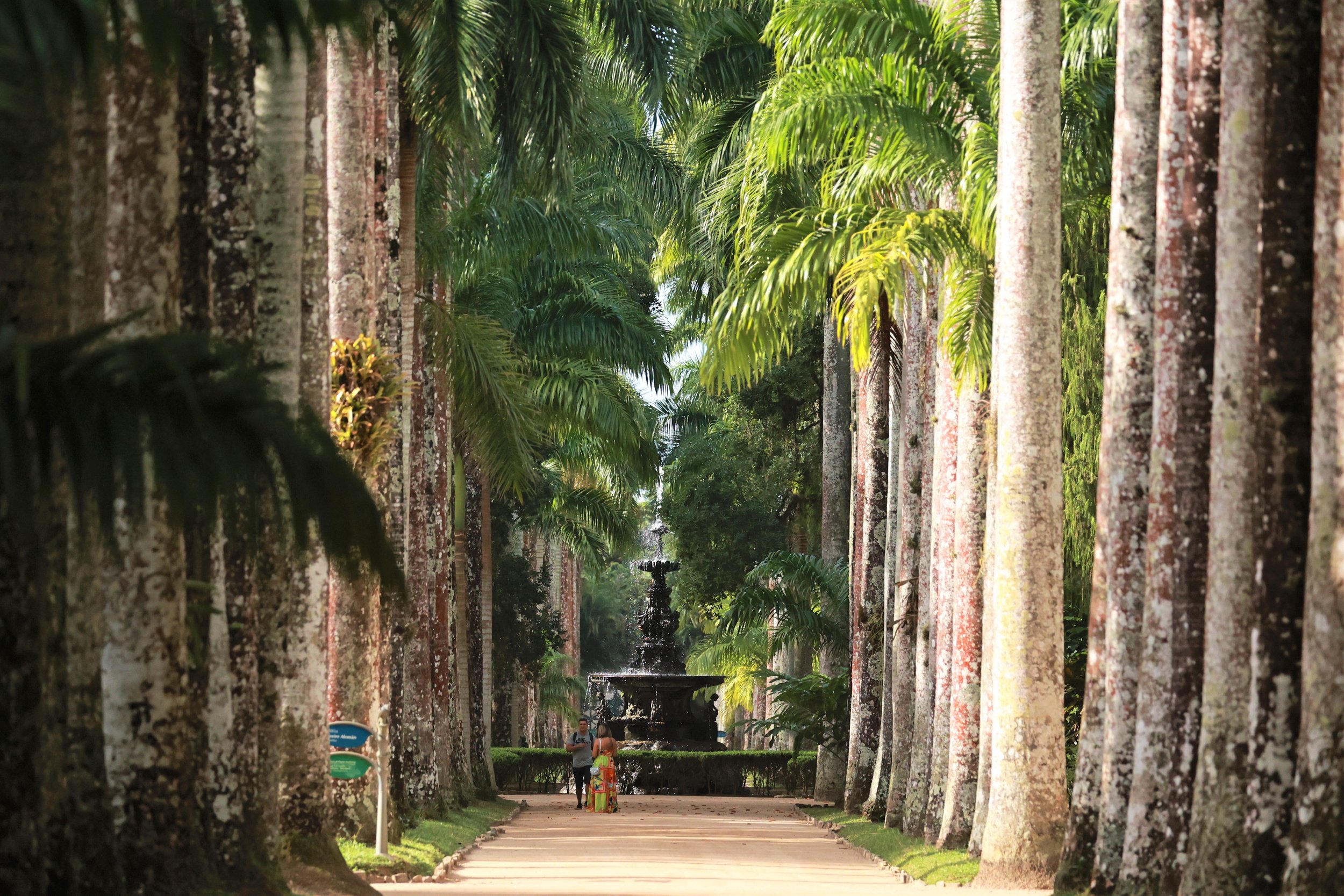
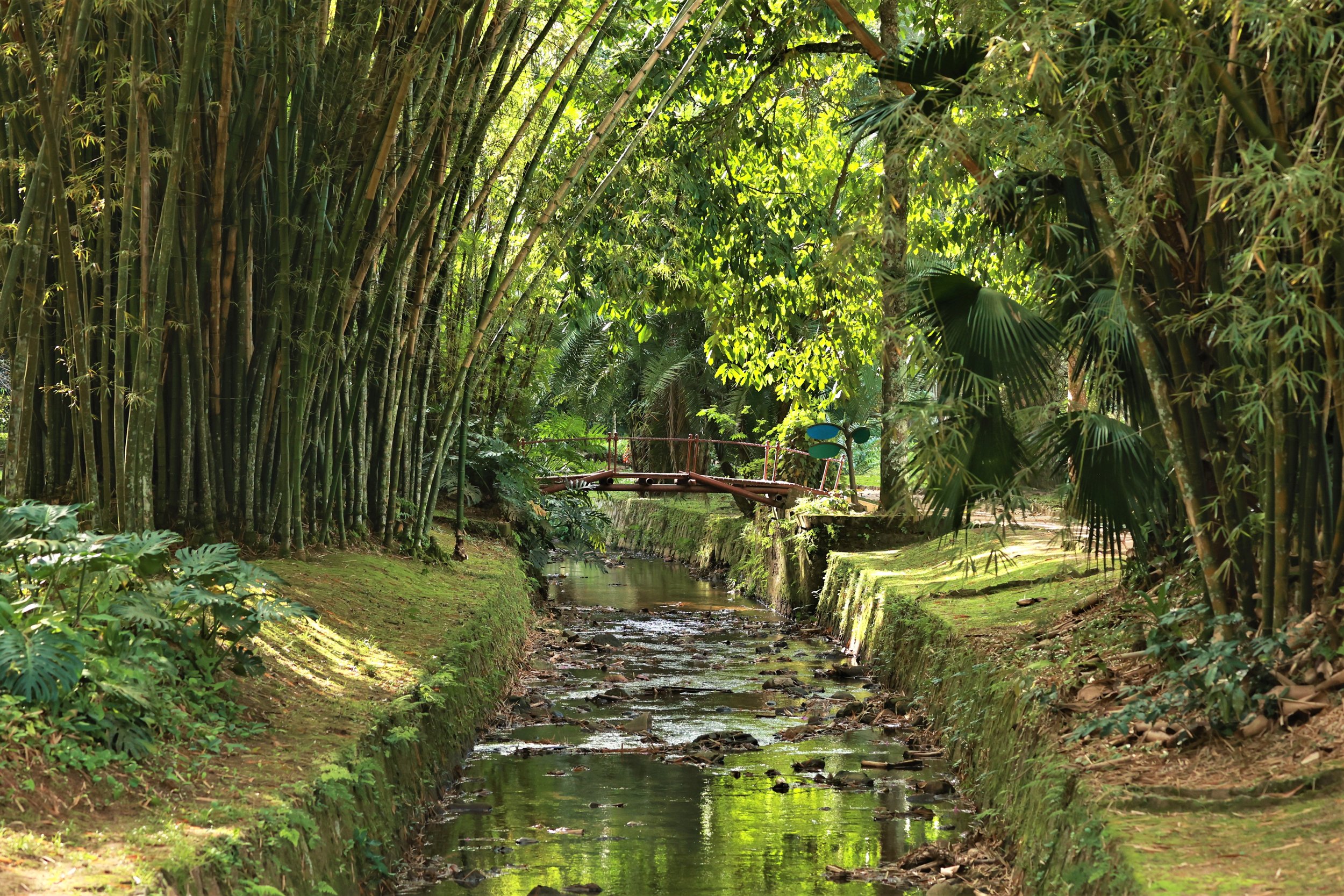
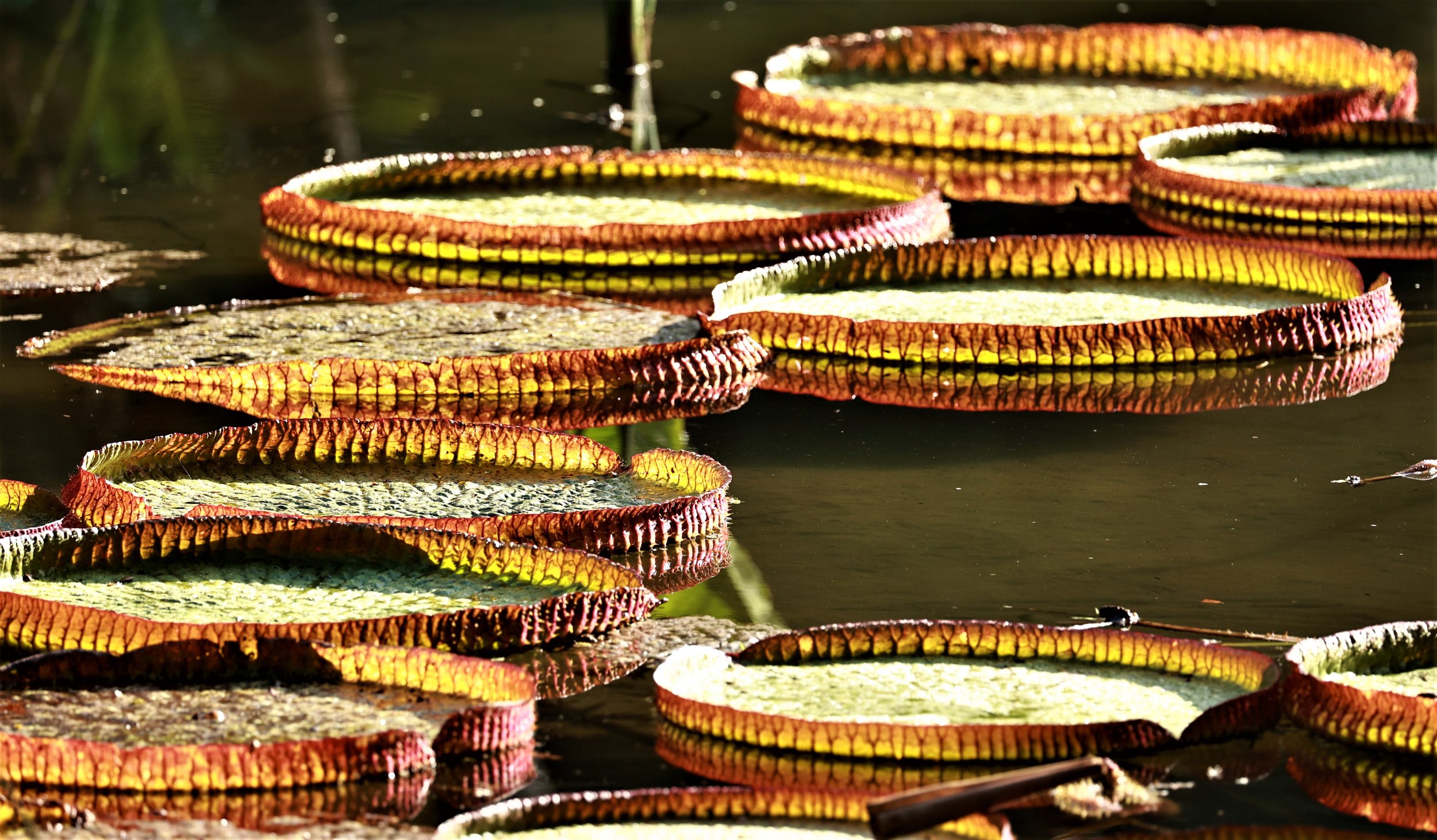





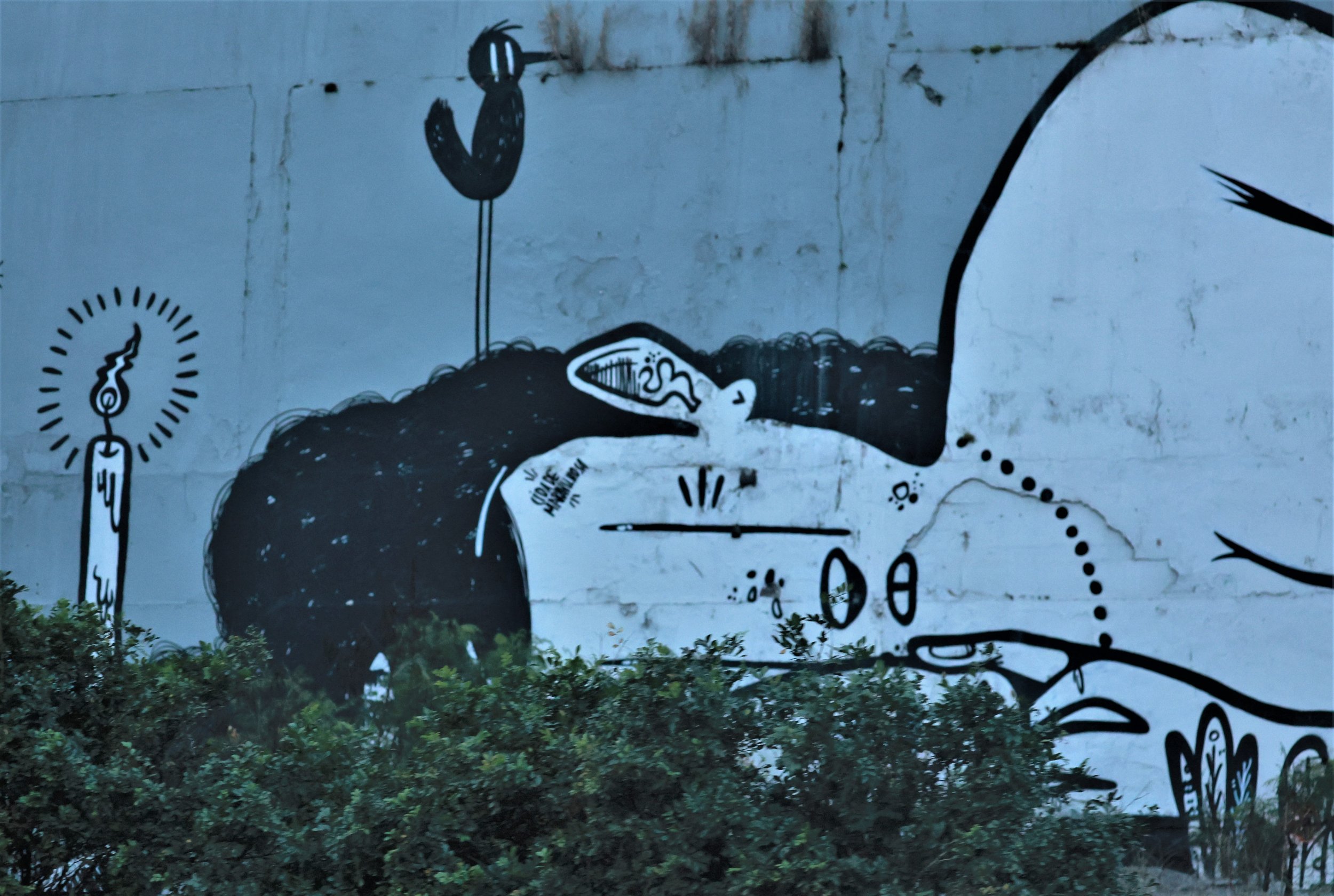


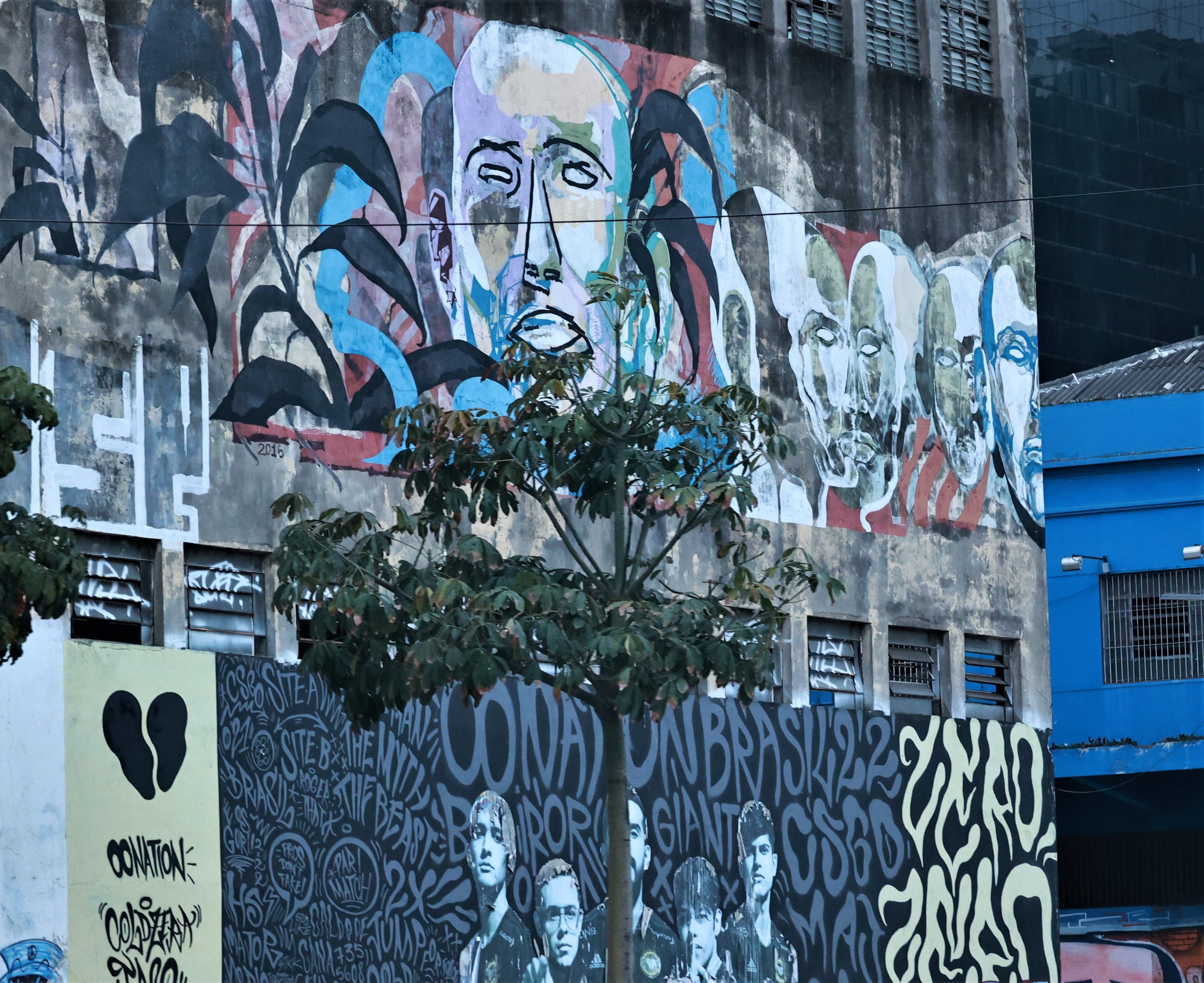



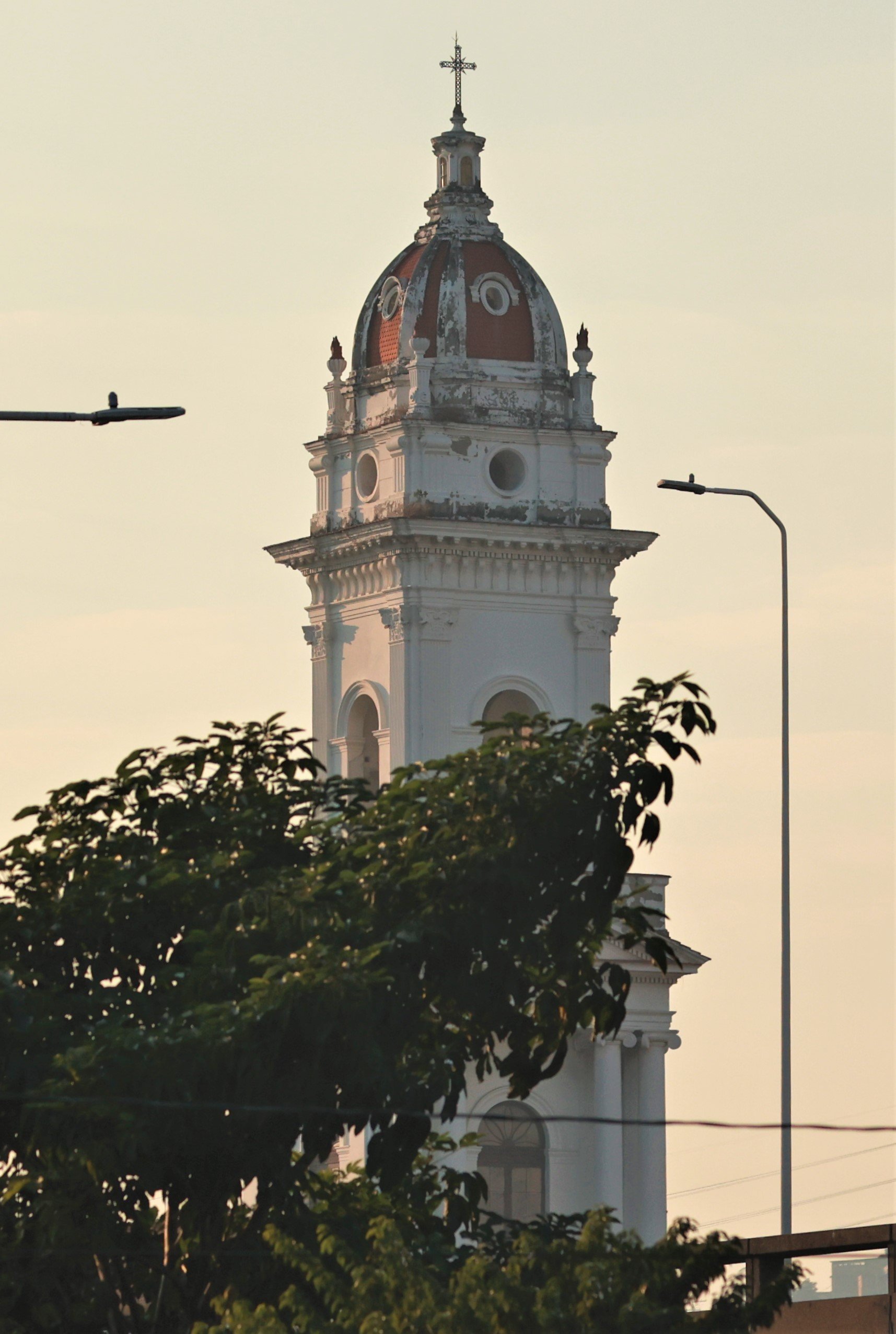

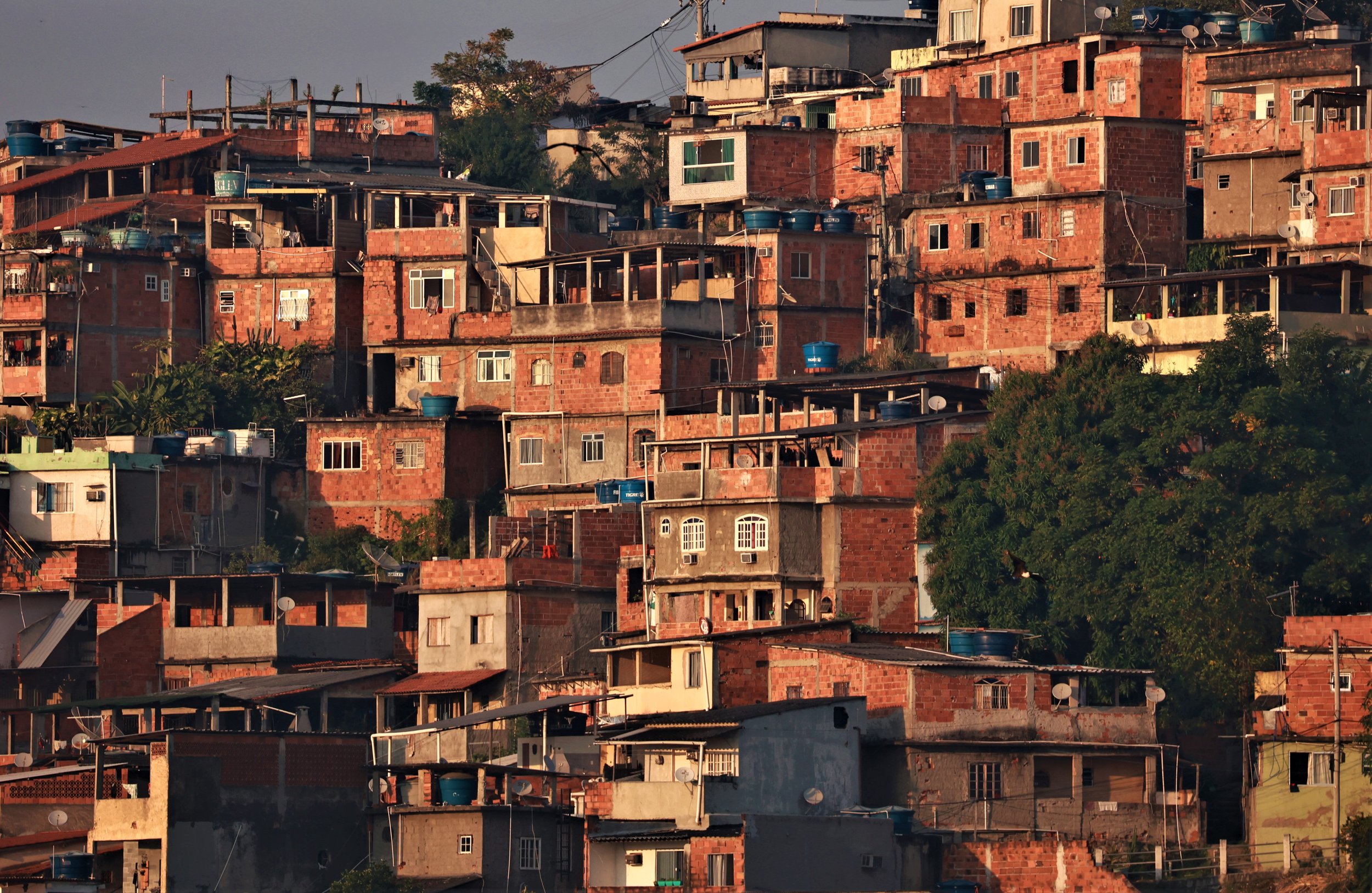
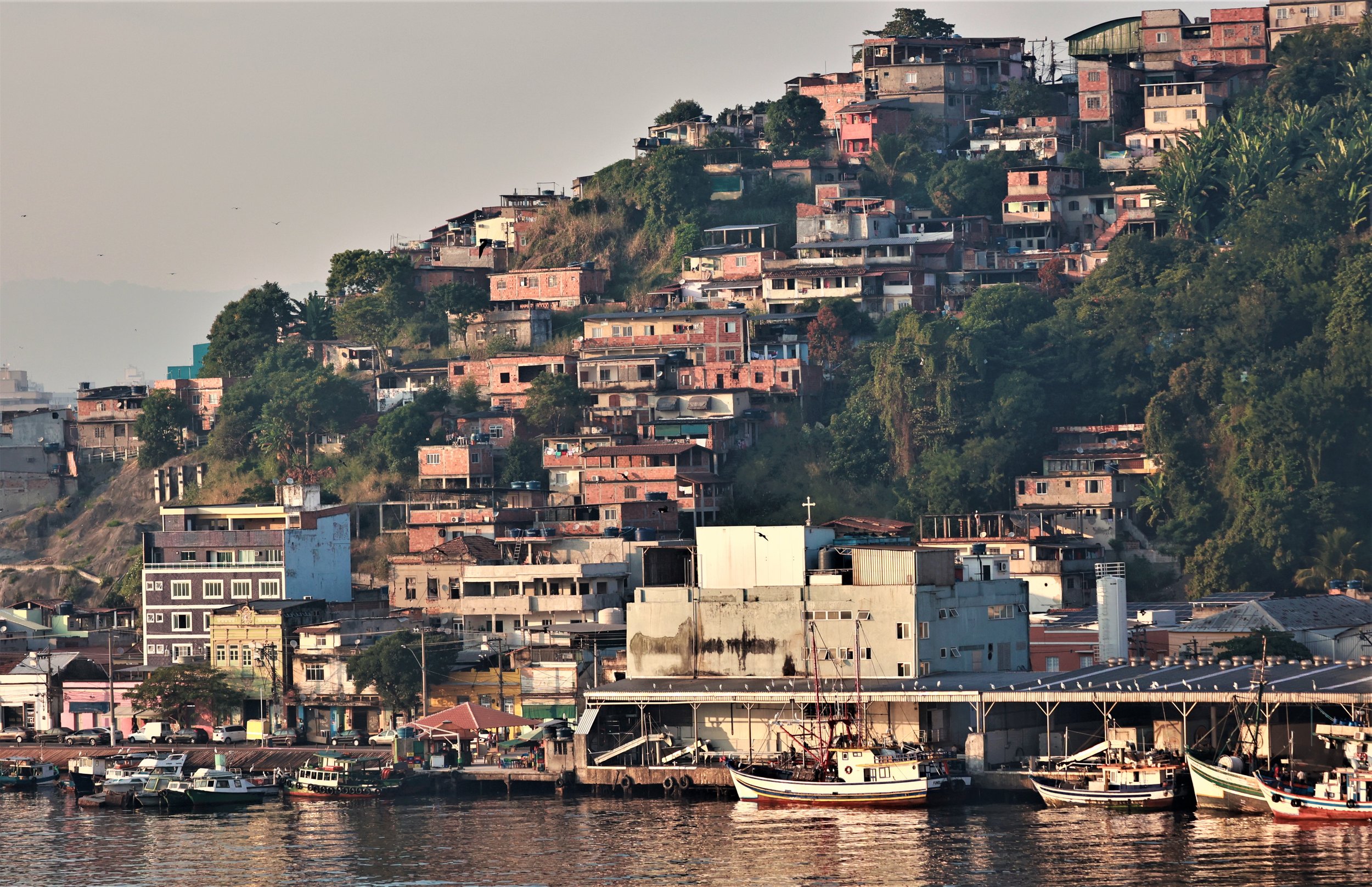


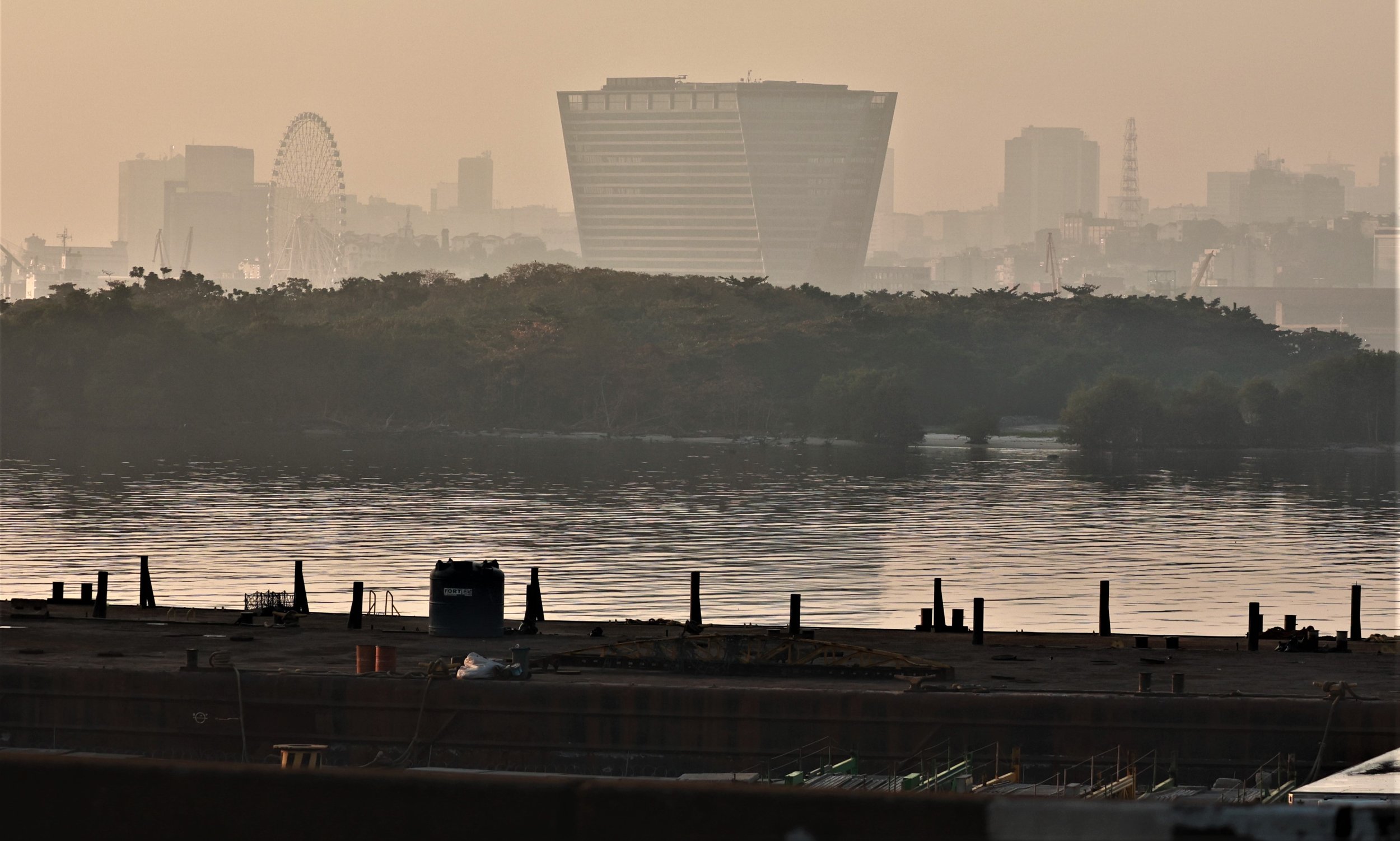


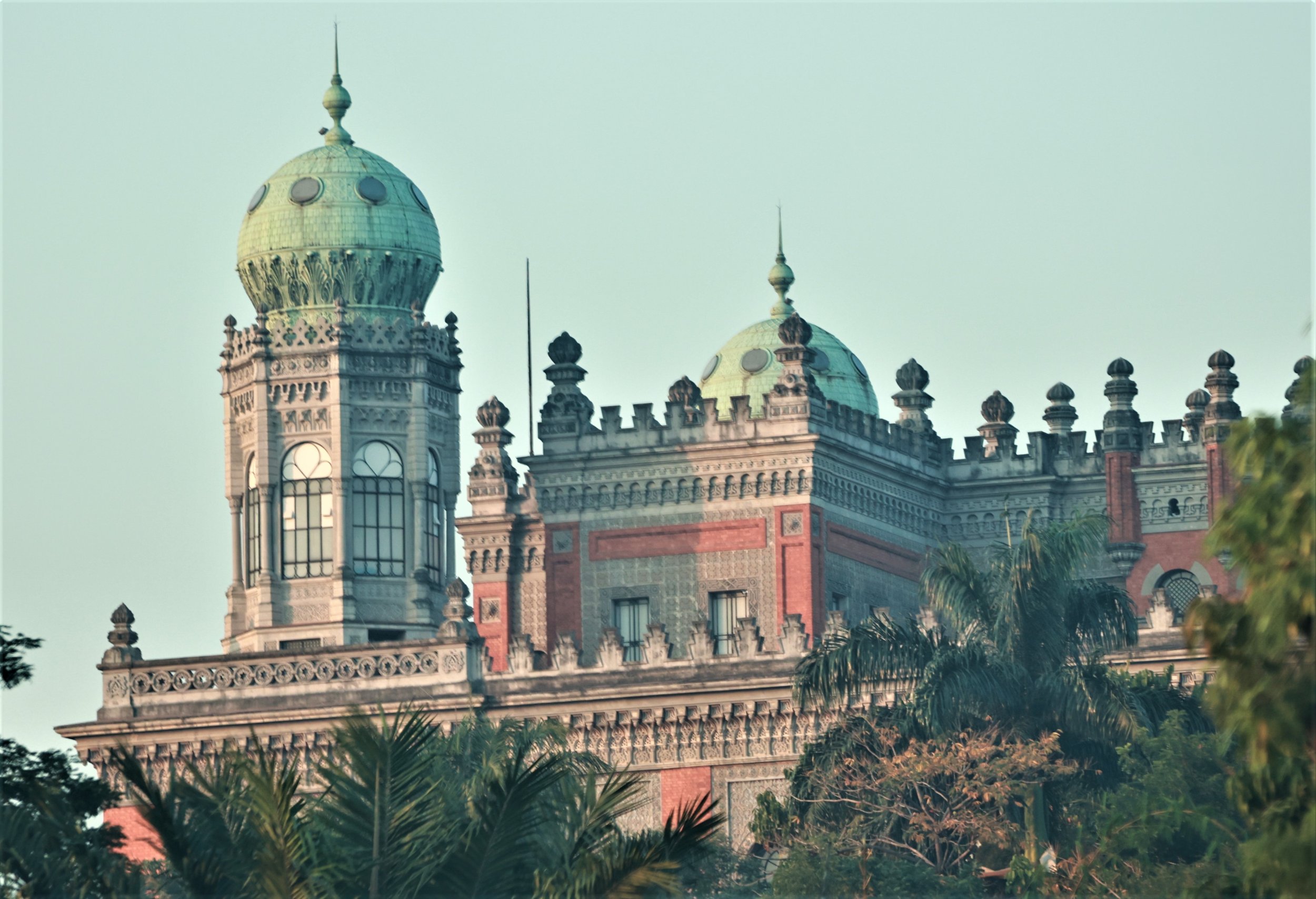

Vale Natural Reserve, Espirito Santo
After an afternoon flight from Rio to Vitoria, Eugenio and I drove to Sooretama for two nights in Sooretama, which served as our base for exploring Vale Natural Reserve, a privately own reserve belonging to Cia Vale do Rio Doce, one of Brazil’s larger multinational corporations. Vale is a sizeable tract of Atlantic Rainforest that is protected as long as the corporation deems it beneficial to their bottom line. But for now, it is a great place for many species of fauna. Our main targets were the Masked Titi, Geoffroy’s Marmoset and Robust Capuchin.
After a relaxing evening in town, we hit the road early morning to the reserve with our local guide, Henrique. Henrique heard the Marmosets and were seen pretty much immediately upon entry, where we had decent views of a rather nervous group. Their white faces were quite a contrast to the death-head masks of the Buffy-tufted Marmosets seen earlier. Robust Capuchin was our next catch. It is a relatively common species that is generally very easy to see there but we only managed one individual seen high up in the forest canopy. Masked Titis were heard commonly but as usual were difficult to get a glimpse of. However we eventually managed a decent view later in the day of a nice pair in a tree near the road,
We did see other species such as Red-rumped Agouti and South American Coati, and two sightings of what still remain as mystery mammals. We debated on what they were amongst ourselves, but no consensus was made, other than one appeared to be a blackish low-profile mustelid-like critter. Thoughts? Tapir sign was everywhere but I was as of now still being denied one of my main targets for Brazil. While driving through the maze of dirt tracts in the reserve we did manage a couple Gray Brockets, only one of which gave us a very brief photo op.
Finally got a view of Masked Titi Monkeys (Callicebus personatus) after dipping in several locations
Geoffroy's Marmoset (Callithrix geoffroyi) at Vale Nature Reserve
One of many Churrascaria visited during my expedition in Brazil!
Brazilian Tapeti (Sylvilagus brasiliensis) was another mammal species seen well at Vale
Solitary Tinamou (Tinamus solitarius) seen well at Vale Nature Reserve, Sooretama, Espirito Santo.
Gray Brocket (Mazama gouazoubira) seen briefly at Vale Nature Reserve, Sooretama, Espirito Santo
Santa Teresa & Augusto Ruschi Biological Reserve
With our main primate targets from Vale under our belts, we started our drive to Santa Teresa, a lovely Italian community in the hill country of Espirito Santo. Here we spent time exploring the grounds and amazing birdlife of Pousada Vita Verde, a true eBird hotspot famous for dozens of species of avifauna, much of which is endemic to the Mata Atlantica. After dinner we headed into the Augusto Ruschi Biological Reserve where we hoped for nocturnal fauna. Sadly we were only to find a Common Potoo, which is a very cool bird that may actually qualify as an honorary mammal. No other mammals this evening.
Our first morning was spent back in the Augusto Ruschi Biological Reserve searching for Masked Titi and Southern Maned Sloths. Titis were elusive but we managed to see two sloths, one of which was expertly spotted directly from the back seat of our car by the eagle eyes of our local guide, Henrique. Our other sloth was quite distant and was spotted days earlier by primatologists who lived in the park and just happened to know exactly where they remembered seeing it several days prior. It had barely moved!
Santa Teresa is also home to the Museu Professor Melo Leitao where we spent time searching for the Titi monkeys and Black-tufted Marmosets, which were eventually found near the entrance of the gardens. Purported to be hybrids, which is easy to believe due to the fact that Callithrix bang just about anything they can get ahold of…. visual comparisons with other Black-tufted Marmosets on line, they do seem to exhibit the main characteristics of the species. I’m counting them!
One of two Southern Maned Sloths (Bradypus crinitus) seen at Augusto Ruschi Biological Reserve, Santa Teresa. Evidently this one had been grazing in the same spot for over a week!
Black-tufted Marmoset (Callithrix penicillata) seen easily at the Melo Leitao Museum Gardens
Black-tufted Marmoset (Callithrix penicillata)
Frilled Coquette (Lophornis magnificus) - a nice rarity at Pousada Vita Verde, one of the main birding hotspots in the Mata Atlantica.
Close up of the Swallow-tailed Hummingbird (Eupetomena macroura) at Pousada Vita Verde
Scale-throated Hermit (Phaethornis eurynome) At least I think so….
Green-headed Tanager (Tangara seledon) Espirito Santo, Santa Teresa, Pousada Vita Verde
Black-necked Aracari (Pteroglossus aracari) was another rock star at Pousada Vita Verde
Our night drive only found a Common Potoo (Nyctibius griseus) in Augusto Ruschi Biological Reserve
Afonso Claudio
From Santa Tereza, we proceeded through some of the most spectacular mountain scenery anywhere I’ve been toward the region known as Afonso Claudio, where we were targeting once again Masked Titi, and also Brown Howlers, Big-eared Opossum, Brazilian Cavy and Hairy Dwarf Porcupine. We spent our nights at the very friendly family-run Pousada Tres Pontoes, which doubles an active farm as well, filled with all the animals one would expect. The family there are simply beautiful and offer great food as well as very warm hospitality and excellent knowledge of the local flora and fauna.
While visiting a local friend’s home on a substantial tract of forest, we were able to see all of our targets less the porcupine which had been AWOL for a few days before our arrival. We had excellent and prolonged views of the Masked Titi and Brown Howlers and at least a couple visits by Big-eared Opossums. While at the property we trekked to a nearby cave on the land which was home to at least two, probably three species of bats – Pallas’s Long-tongued Bat and Seba’s Short-tailed Bat. One other bat remains unidentified – working on it. We also searched for and found Brazilian Cavy in a private wetland near the home of our pousada owner.
We were also hoping for Brown-throated Three-toed Sloths and Southern Maned Sloths. Sadly we dipped on both but I did get a good look at an unexpected Buffy-headed Marmoset family that had never been spotted in the area before. We did finally tick Brown Howlers which had been sighted by a neighbor down the road earlier. After a brief trek up an unfinished road, we did see a family group which gave us some decent views.
Brown Howler (Alouatta guariba) at Afonso Claudio
Masked Titi Monkey (Callicebus personatus)
Buffy-headed Marmoset (Callithrix flaviceps) was an unexpected sighting at Afonso Claudio
Big-eared Opossum (Didelphis aurita) is a normal nightly visitor at Afonso Claudio, Espirito Santo
Brazilian Guinea Pig (Cavia aperea) were seen at a local private wetland in Afonso Claudio
South American Coati (Nasua nasua) were seen in large numbers in Afonso Claudio, Espirito Santo
Seba's Short-tailed Bat (Carollia perspicillata) Afonso Claudio, Espirito Santo
Pallas's Long-tongued Bat (Glossophaga soricina) in Afonso Claudio, Espirito Santo. Very good name!
This species appears to be different and I am working on ID.
Campo Troupial (Icterus jamacaii) one of the many birds seen in Afonso Claudio, Espirito Santo
Yellow-green Grosbeak (Caryothraustes canadensis)
Channel-billed Toucan (Ramphastos vitellinus ariel) is the subspecies found in Afonso Claudio, Espirito Santo
Feliciano Miguel Abdala Reserve (Caratinga Biological Reserve)
Some five hours from Afonso Claudio and another spectacularly scenic drive, we arrived at FMAR another private reserve where we hoped to see the Northern Muriqui, once considered to be the same species as the Southern Muriqui but has since been split. We arrived just before dusk and had time for a short walk into the forest of the reserve where our local guide, Roberto Pereira, found a small family group a couple hundred meters up the main trail. We had to bushwack our way into the forest and we had fair views of three or four individuals.
Our main target for the reserve under our belts we felt pretty confident and relaxed with some easy night viewing at our spectacular resort, Pousada Corredeiras do Primitivo, a family run operation situated along the banks of the Manhuacu River. We heard quite a few Spectacled Owls although none were sighted. We managed a Big-eared Opossum in the trees behind the Pousada.
The following morning we quickly found another family group of Muriqui which gave us much better views and a couple hours of natural behavior as they woke and proceeded to carry out their daily duties. While there we met an American videographer, Jay Blaine, making a documentary on the Muriqui and the Mata Atlantica in general. Here is a link to his finished product. Well worth a watch.
Watching the Muriqui, the largest primate species in the Americas, live their lives in the spectacular forests of Abdala, was an experience I will never forget. We also got very good views of Black Capuchin and Capybara while in the reserve. While we were searching for wildlife along the busy and dusty main road, we also caught a glimpse of an extremely rare Southern Naked-tailed Armadillo, a species that had never been recorded in the reserve before. The son of the owner of the reserve was very shocked to see my images of the animal.
Near where we saw the armadillo, we got very brief but decent views of the only Buffy-headed Marmoset family group. I was thinking we stood no chance of seeing them when I found out that the nearly 1000-acre reserve had only ONE group of these. After a bit of searching, I noticed what I initially thought was a small squirrel cross the main road but ended up being one of the marmosets. Lucky!
Brown Howler (Alouatta guariba) finally gave us good views at Feliciano Miguel Abdala Reserve
Buffy-headed Marmoset (Callithrix flaviceps) -seen at Feliciano Miguel Abdala Reserve
Black Capuchin (Sapajus nigritus) were common at Feliciano Miguel Abdala Reserve
Northern Muriqui (Brachyteles hypoxanthus) are the largest of all primates in South America and can be seen fairly easily at Feliciano Miguel Abdala Reserve (Caratinga Biological Reserve). The vestigial thumbs and the patchy colored face differentiate the Northern and Southern Muriqui, whose face is purely black and lacks thumbs completely. I could not get over the extremely muscular prehensile tail that was used like a fifth limb which often was the dominant one.
Brown Howler (Alouatta guariba)
Black Capuchin (Sapajus nigritus) Feliciano Miguel Abdala Reserve (Caratinga Biological Reserve). The individuals here were very differently colored than the individuals seen in Rio earlier.
Capybara (Hydrochoerus hydrochaeris) are arguably the most common large mammal seen in South America but the ones we saw Feliciano Miguel Abdala Reserve (Caratinga Biological Reserve) and nearby were the only ones seen in the Atlantic Rainforest region.
Southern Naked-tailed Armadillo (Cabassous unicinctus). Evidently this was a record sighting at Feliciano Miguel Abdala Reserve (Caratinga Biological Reserve) - never before recorded there.
Rio Doce State Park
A couple hours from Abdala, we worked our way to Rio Doce State Park, a new destination on the mammal watching circuit. Fairly well known for birding groups, I was the guinea pig for this location and I was impressed. We found Black-fronted Titi, Geoffrey’s Marmosets, Black Capuchin, Tayra and my first Brazilian Tapir! We had two awesome individual Tapir along the main road of the park during our night drive and a third was sighted by another car just down the road. We heard what we thought was another one in the bushes along the road as well. Another mystery mammal was spotted in the bush with inconclusive images taken but sadly unhelpful. I was very jazzed to have seen the second of my top five mammal targets! And only one more Tapir species to go before I was to be a member of a very exclusive club.
Multiple sightings of the Black-fronted Titi were very easy using playback by our local guide. The noisy and aggressive response to the short playback was impressive and entertaining. They came immediately out of the forest to challenge us and put on quite a show. The population seems to have recovered quite well from the Yellow Fever outbreak a few years prior. Curious marmosets were also attracted to the commotion. While exploring the airstrip of the park, we noticed fairly fresh Jaguar pug marks, so the ecosystem appears to have all trophic levels.
I gave my thumbs up to Regina regarding Rio Doce State Park and Henrique as a great local guide for the location. It can be a very popular place especially on weekends and holidays so I would recommend that mammal watchers try to visit on other days. I suspect it will become a more regular stop for mammalers in the near future.
The images below are of the Black-fronted Titi seen quite easily at Rio Doce.
Geoffroy's X Black-tufted X Wied's Marmoset Hybrid (Callithrix geoffroyi X penicillata X kuhlii) were common at Rio Doce State Park, Minas Gerais
Geoffroy's X Black-tufted X Wied's Marmoset Hybrid (Callithrix geoffroyi X penicillata X kuhlii)
Black Capuchin (Sapajus nigritus) were easily seen in the Rio Doce State Park campgrounds.
Caraca
Four hours drive from Rio Doce is the famous and beautiful Caraca Seminary and Natural Reserve, an expansive natural area and historical seminary situated in the spectacular mountains of Minas Gerais state. One of the few remaining substantial tracks of Atlantic Rainforest in one of the most heavily impacted states in eastern Brazil, The Caraca Reserve is a very popular birding destination but is also good for several mammals, including the Maned Wolf, which famously comes nearly every evening after evening prayers at the seminary to feast on fruit offered by the monks at the seminary. For nearly 50 years the wolves come in nightly for their free dish of bananas and other fruit offered by the monks which allows the hundreds of tourists who visit to see this amazing creature.
The event is quite a thing. The patio of the seminary is not that large and over one hundred tourists can be crammed in to wait for the wolf or wolves to come in for their fruit. After the evening service and prayers someone comes out with ripe fruit in a metal tray. They scrape the tray on the concrete of the patio making the noise that attracts the wolves. There is a very long lecture about the wolves and history of the seminary delivered and then the tourists simply wait for the wolves to come in. The lecture on our night seemed to drone on forever….Crab-eating foxes were noted during the talk which ended up being a bad sign as they are known for scaring away the wolves.
It was interesting watching the people who were waiting for the show. Many were drinking bottles of wine and chatting fairly loudly and I thought to myself that the chances would be low for a wolf to brave this crowd… But then again, this has been a thing for decades so who knows! After an hour or more, the crowd started to dwindle…still no wolf….and then another hour passed and the crowed dwindled even more…the temperature was approaching 0 degrees and I was freezing. Then around 10PM, with only a three or four strong willed wildlife watchers, a young wolf came in for a taste of fruit! It was so quick I didn’t have time for an image. After waiting even longer the wolf came in three or four more times giving me some opportunities for some very poor images (the lighting was horrible). I was going to try for more but an asshole with a flashlight thought it was cool to try to scare the wolf off the patio….But I finally had my third main target under my belt! And I was near frost-bitten!
Seeing the wolf like this was great but it was not in his natural habitat. Later in my trip, I planned several nights in the Cerrado biome of Emas National Park later in the expedition for some chances at wolves there. Here is a link to the Cerrado Biome portion of the Great Primate Safari of 2023. I was not disappointed.
Other mammals spotted in Caraca included Ingram’s Southeastern Squirrels and Gray Brockets. We did accomplish some decent birding as well. Masked Titis had been common in the reserve years ago but the Yellow Fever outbreak a few years earlier decimated the population sadly.
Our lodging was at the lower chalets of the seminary, a beautiful and roomy stucco building originally made for visiting monks but suited me just fine. After a morning in the reserve, we made our way to Belo Horizante where I was to bid farewell to my good friend Eugenio and catch my flight to Ileus, my next stop on this epic expedition.
Maned wolves have extraordinarily long legs and have to spread them like a giraffe when bowing down to eat or drink.
Blue or Swallow-tailed Manakin (Chiroxiphia caudata) at Caraca Seminary, Minas Gerais
Blue Dacnis (Dacnis cayana) was a very common species seen throughout the Mata Atlantica.
Ilheus & Una Bahia do Sur
Our main targets here were Golden-headed Lion Tamarins, Wied’s Marmosets, Coastal Black-handed Titi and the very rare and elusive Yellow-bellied Capuchins, which we found within a ten minute walk from our local guide’s house just outside Una near the forest fragments we were to work the next two days. By the time we documented the capuchins the day was pretty much done and I was exhausted enough to opt out of a night trek. I always wonder what I missed when I “opt out” like this… My new guides for Una were Lukas Daneu and Binho, who was simply amazing and I swear he simply made the target species “appear”….
Our first full day in Una was very productive. We found the Tamarins within an hour or so of trying. Our first group was a bit tricky to photograph as they were in very bad light and pretty high up. We did however find Wied’s Marmosets shortly after in pretty design conditions and they gave us many views during our time there. Titis remained elusive until the end of the day when my local guide made three magically appear from nowhere along a track deeper into the forest fragment. We had some decent views of the three as they moved due to our presence.
We also had very good views of the local coloration of the Southern American Coati and an Atlantic Forest Tamandua, one of the three subspecies seen during my time in Brazil. And we found a Northern Maned Sloth during our final trek in this location. It was very happy sleeping high up in the canopy and even after waiting over an hour it refused to move to allow views that were not of his butt. It was cold and he was enjoying the morning sun – we understood. And the final group of Tamarins (third group seen during our time in Una) finally gave us better views.
We visited an abandoned house deep in the forest where Lukas and Binho knew was a bat roost. There we saw two species of bats - Pallas’s Long-tongued Bat and Little Big-eared Bats. Along the river that split the forest, Binho found a very small micro-bat which I believe to be a South American Hoary Bat. I am open to any ID corrections if you know better.
My last day in this region was spent closer to Ileus where we searched in vain for Guianan Dolphins. Evidently one of the only places to possibly see them is out at the end of a long spit in the harbor where they hang out, but public is not allowed there unless they have direct permission, which was impossible to get on short notice. I would not consider that species to be a possibility in Ileus unless you procure the permits ahead of time.
Exploring Ileus itself was great fun. A very historical town in its own right, the town is simply beautiful with its old colonial architecture and the setting next to the coast and the inland waterways. The town has a great vibe for sure.
Link to the Birds of Ilheus & Una Biological Reserve & Township
Yellow-breasted (Golden-bellied) Capuchin (Sapajus xanthosternos) is a very rare Capuchin which took us less than ten minutes to find in the forest near Una Township.
Coastal Black-handed Titi (Callicebus melanochir) were finally spotted!
Golden-headed Lion Tamarin (Leontopithecus chrysomelas)
South American Coati (Nasua nasua). Notice the extreme melanism in this individual. Evidently this is a common color form in this area of Brazil.
South American Hoary Bat (Aeorestes villosissimus)
Little Big-eared Bat (Micronycterius megalotis)
Pallas's Common Long-tongued Bat (Glossophaga soricina)
Wied's Marmoset (Callithrix kuhlii) were the fourth primate species seen in the Ilheus area.

Views of Ilheus




Still less than Thailand....LOL







My guides, Lukas Daneu and Binho.


The coastal Atlantic Rainforest
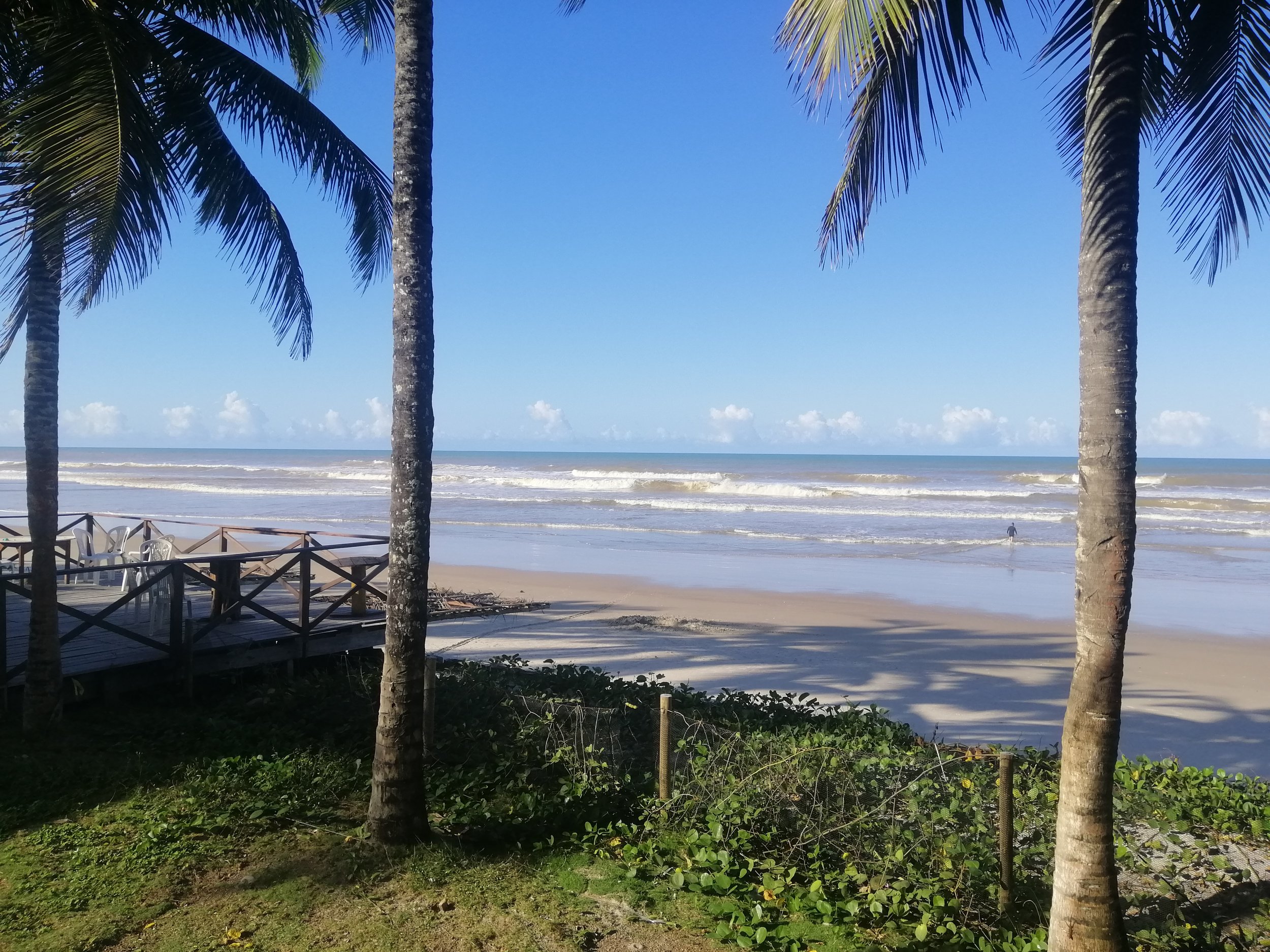
Ilheus is great for beaches

Mangrove forests are common in the area as well.
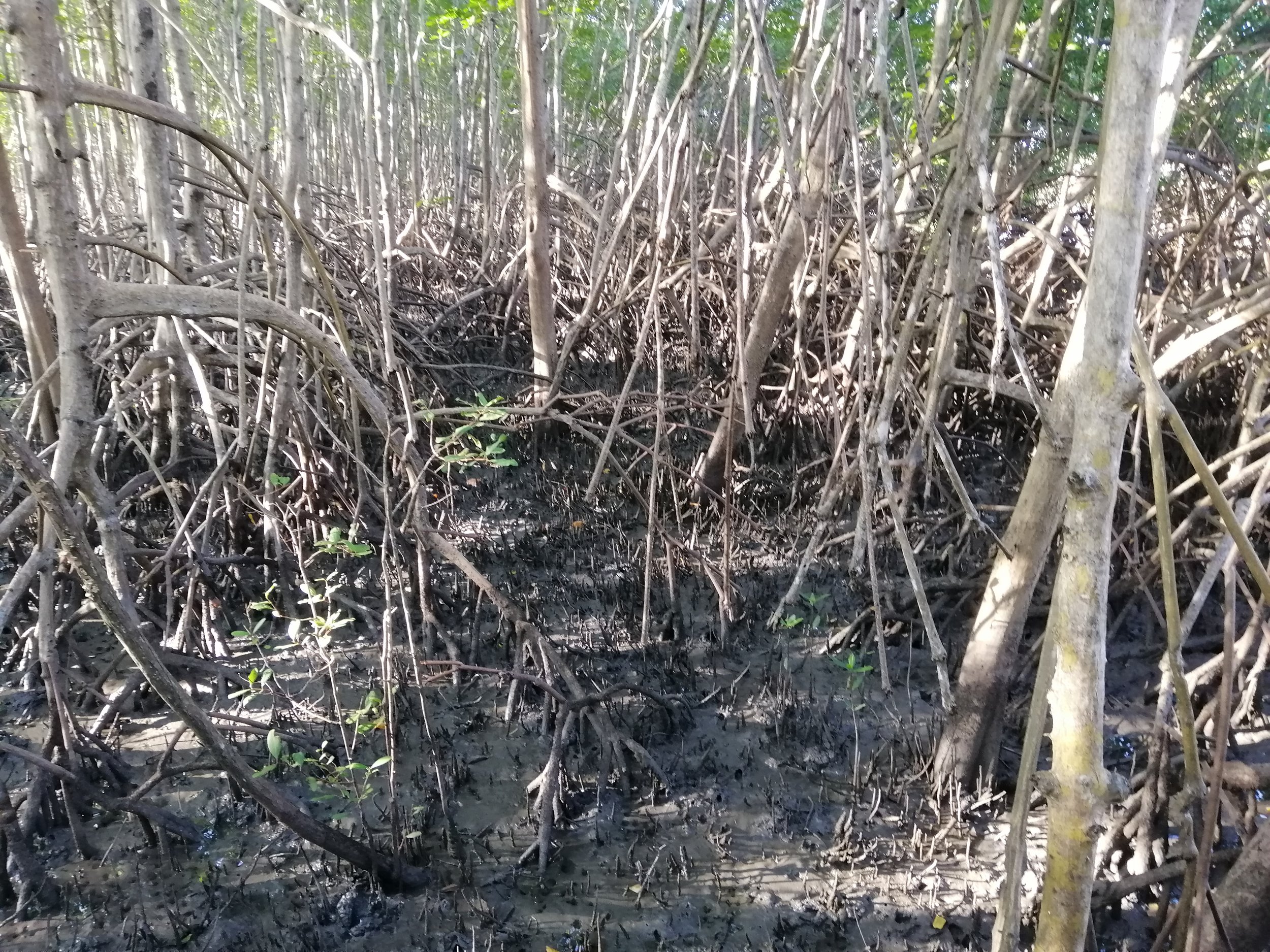
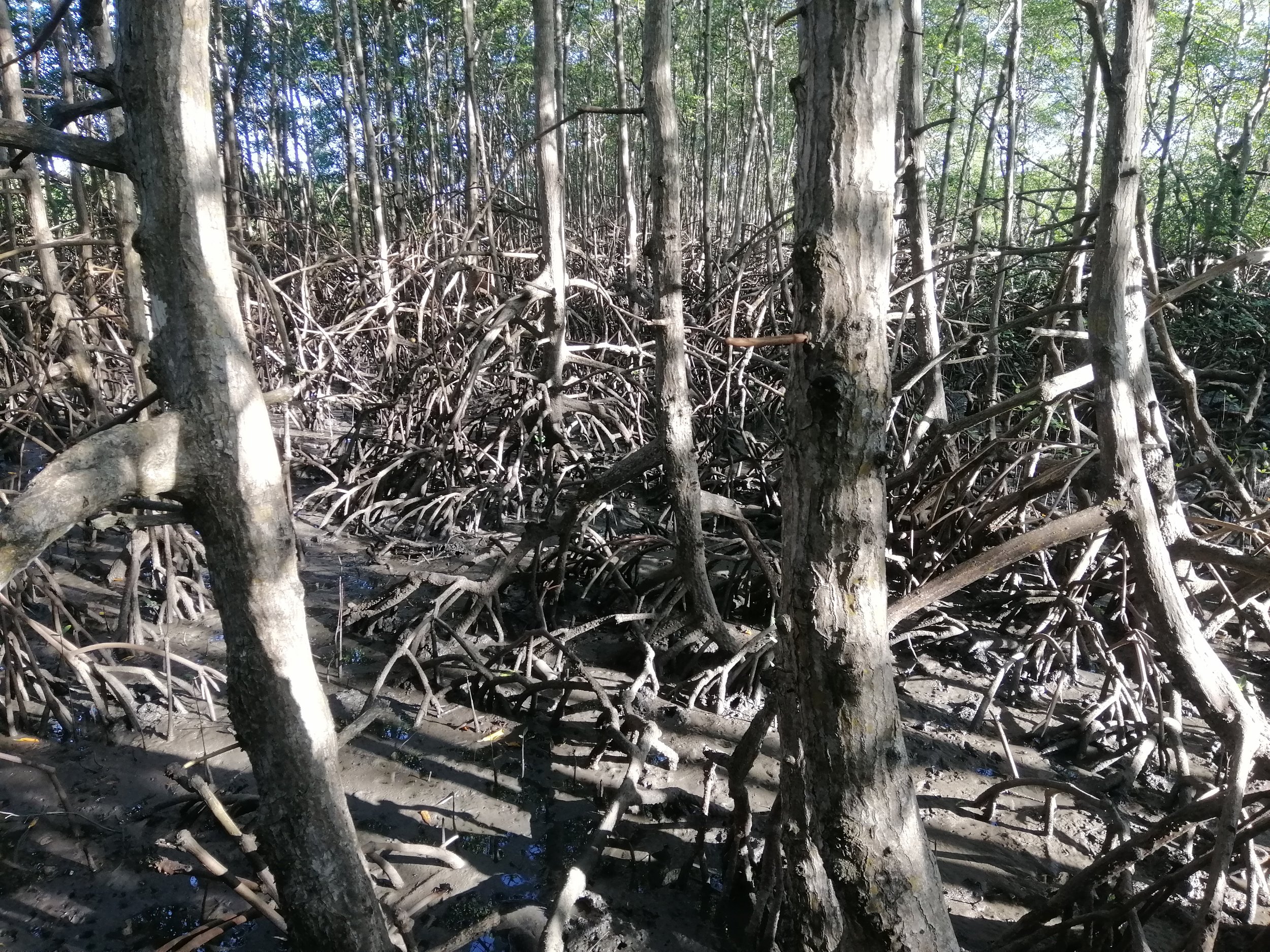
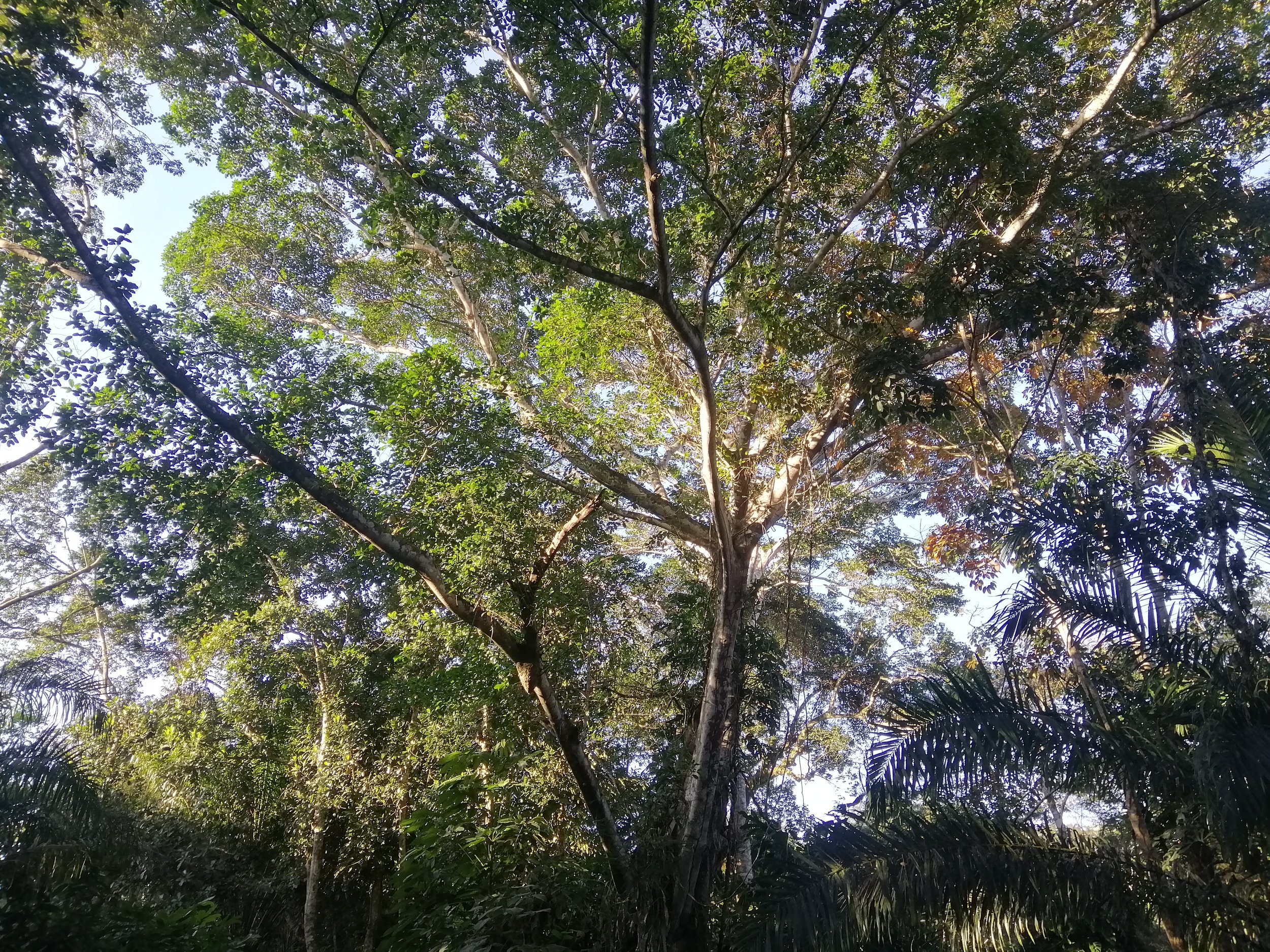
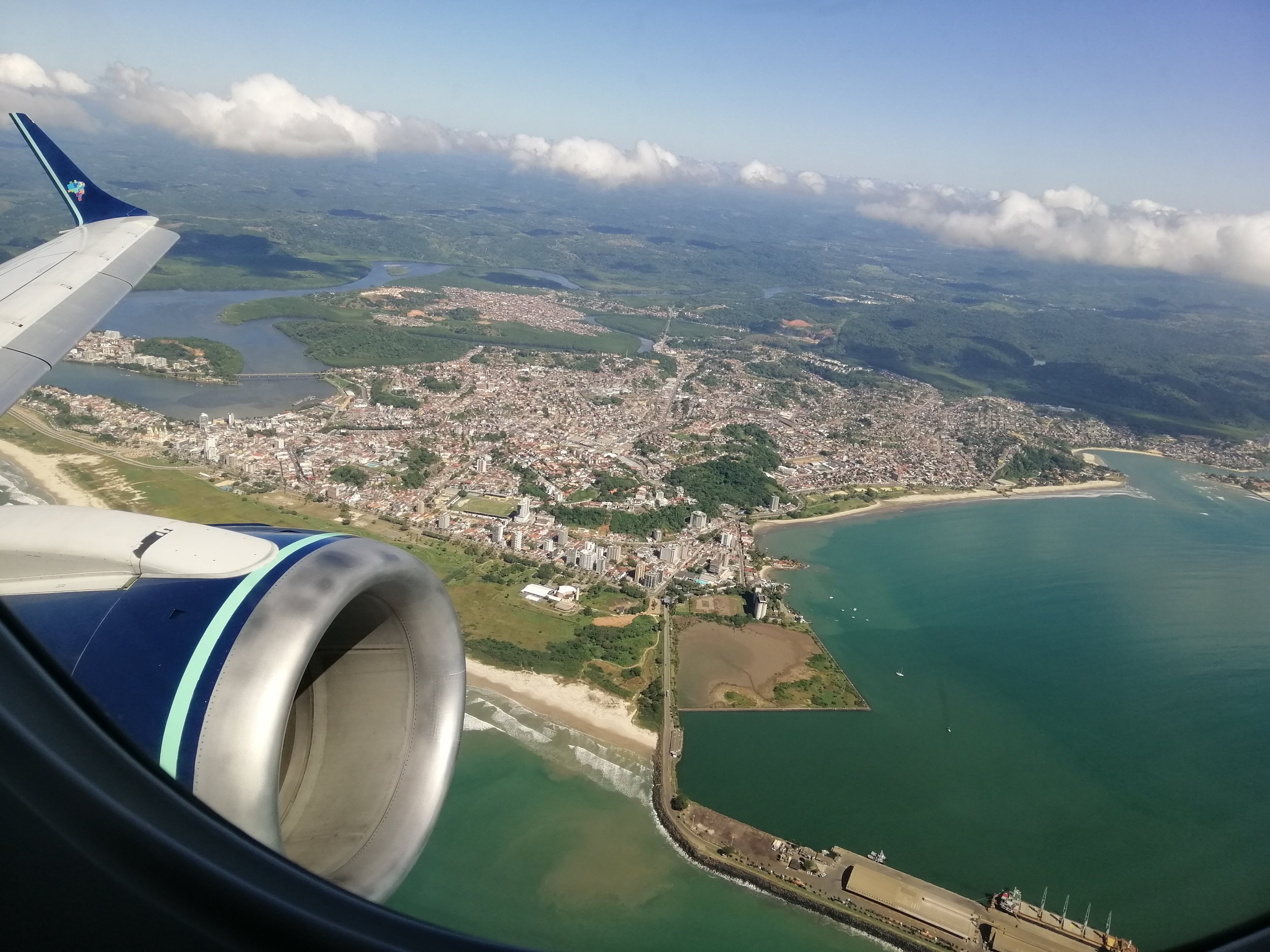
Ilheus from the air.
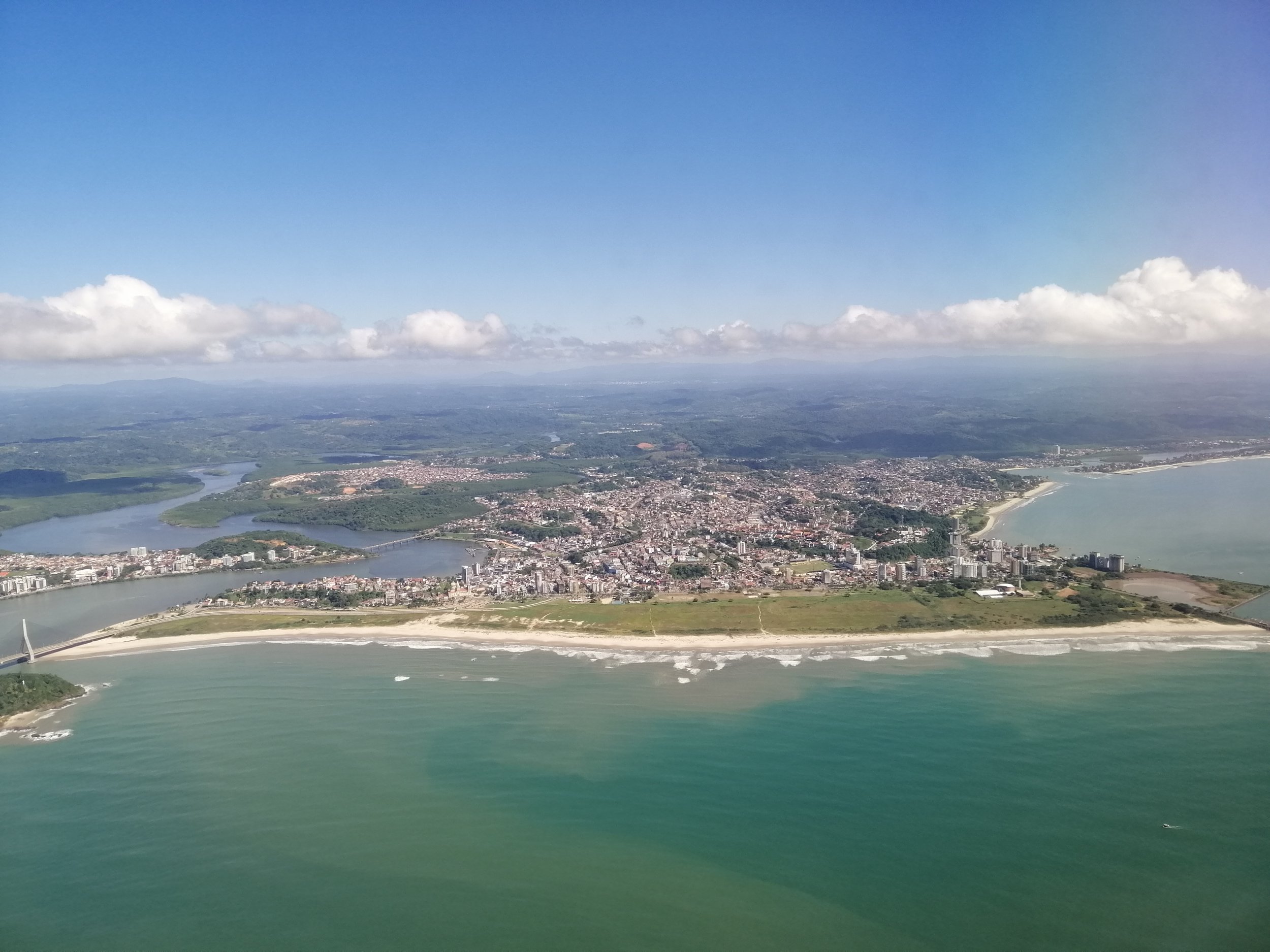
Estancia
After a morning flight from Ileus to Salvador, I met Wylde Vieira, my awesome local guide for the greater Estancia region. We made our way to Estancia which was to serve as our base for exploring the surrounding forest fragments in search of Coimbra Filho’s Titi Monkey and White-tufted (Common) Marmosets. The road to Estancia was very nice and scenic and we made some stops at forest fragments along the way. While we did not see any of the target species I did get a feel for the land and where we were going to focus our efforts the next day bright and early.
We started our day early and headed to a forest fragment that Wylde knew about and had seen Titi monkeys in the past. We searched some trails and found some interesting bird species but no Titis for an hour or so. We did finally hear a group wreak havoc down the road and we quickly headed in their direction. Titi monkeys would be nearly impossible to find if they weren’t so damn noisy! We did find a couple in the high canopy in rather poor light but we got ‘em! Target achieved. Later that day, in another forest fragment we had excellent views of the White-tufted Marmosets who were very curious of us and gave us quite show.
We ended our day in another forest fragment that was more remote and Wylde found a Northern Maned Sloth and showed me quite an array of local avifauana, my favorite of which was the incredible Brazilian Tanager, an endemic that redefined the color red for me. Wylde and I had a great time together. A fellow death-metal enthusiast, we had a lot in common! 😉
White-tufted or Common Marmoset (Callithrix jacchus)
Almost dipped on Coimbra Filho's Titi Monkey (Callicebus coimbrai) in Estancia, Sergipe. Thankfully they are SO noisey!
Rare endemic Brazilian Tanager (Ramphocelus bresilia) were seen in good numbers in Estancia, Sergipe
Purple Gallinule (Porphyrio martinica)
Female Brazilian Tanager (Ramphocelus bresilia)
Brazilian Anole (Anolis brasiliensis) Estancia, Sergipe & Northern Bahia State
My three weeks in Brazil’s Mata Atlantica was absolutely phenomenal. I was very fortunate to have had incredible luck in finding all but a couple of my target species. Had it not been for the knowledge and expertise of my outstanding guides, I never could have achieved this level of success in such a short time or even at all. Although three weeks may seem like a nice chunk of time, I feel I barely scratched the surface in experiencing what the once vast but now heavily fragmented and reduced Atlantic Rainforest has to offer a would-be naturalist such as myself. I met incredible people and made many new friends and memories of this wonderful place. Life is short but who knows, maybe I will find myself here once again. I definitely felt that many of the towns and areas I visited on this journey are places I could call home. Partly because of their beauty and biodiversity and partly due to the amazing and friendly people whom I met along the way.
Here are links to the other legs of the Great Primate Safari of 2023
Brazilian Cerrado and Pantanal
Mammal Species List (41 species, 45 taxa, 43 lifers!)
Link to complete species list for the “Great Primate Safari of 2023”
Order Primates
1. Alouatta guariba - Brown Howler - Afonso Claudio, Caratinga, Sao Paulo
2. Brachyteles arachnoides - Southern Muriqui - Carlos Botelho State Park
3. Brachyteles hypoxanthus - Northern Muriqui - Feliciano Miguel Abdala (Caratinga)
4. Callithrix aurita - Buffy-tufted-ear Marmoset - Nazare Paulista, Sao Paulo State, Brazil
9. Callithrix kuhlii - Wied's Marmoset - Illeus, Bahia Brazil
10. Callithrix penicillata - Black-tufted Marmoset - Santa Teresa, Melo Leitao Museum Gardens
11. Leontopithecus chrysomelas - Golden-headed Lion Tamarin - Illeus, Bahia Brazil
12. Leontopithecus chrysopygus - Black Lion Tamarin - Fazenda Garibaldi, Sao Paulo State
13. Leontopithecus rosalia - Golden Lion Tamarin - Unamar Rio de Janeiro State
14. Sapajus nigritus - Black Capuchin - Feliciano Miguel Abdala Reserve (Caratinga)
15. Sapajus robustus - Robust Tufted Capuchin - Vale Nature Reserve, Espirito Santo
16. Sapajus xanthosternos - Yellow-breasted (Golden-bellied) Capuchin - Illeus, Bahia
17. Callicebus coimbrai - Coimbra Filho's Titi Monkey - Estancia, Sergipe & Northern Bahia
18. Callicebus melanochir - Coastal Black-handed Titi - Illeus, Bahia
19. Callicebus personatus - Masked Titi - Rio Doce State Park, Minas Gerais
20. Callicebus nigrifrons - Black-fronted Titi - Rio Doce State Park, Minas Gerais
Order Pilosa – Anteaters
21. Tamandua tetradactyla tetradactyla - Southern Tamadua - Illeus, Bahia Brazil
22. Bradypus crinitus - Southern Maned Sloth - Augusto Ruschi Biological Reserve, Santa Teresa
23. Bradypus torquatus - Northern Maned Sloth - Estancia, Sergipe & Northern Bahia State
Order Cingulata - Armadillos
24. Cabassous unicinctus - Southern Naked-tailed Armadillo - Feliciano Miguel Abdala (Caratinga)
25. Tolypeutes tricinctus - Three-banded Armadillo – Bahia State
Order Chiroptera - Bats
25. Aeorestes villosissimus - South American Hoary Bat - Illeus, Bahia
26. Carollia perspicillata - Seba's Short-tailed Bat - Afonso Claudio, Espirito Santo
27. Chiroptera - Species needs ID - Afonso Claudio, Espirito Santo
28. Glossophaga soricina - Pallas's Common Long-tongued Bat - Illeus, Bahia
29. Micronycterius megalotis - Little Big-eared Bat - Illeus, Bahia
Family Canidae - Dogs
30. Cerdocyon thous - Crab-eating Fox - Emas National Park, Goias State, Pantanal, Caraca
31. Chrysocyon brachyurus - Maned Wolf - Emas National Park, Goias Brazil, Caraca
Family Cervidae - Deer
32. Mazama gouazoubira - Gray Brocket - Vale Nature Reserve, Sooretama, Espirito Santo
Order Lagomorpha - Rabbits
33. Sylvilagus brasiliensis - Brazilian Tapeti - Vale Nature Reserve, Sooretama, Espirito Santo, Nazare, Pantanal, Emas
Order Marsupalia
34. Didelphis albiventris - White-eared Opossum - Fazenda Garibaldi, Sao Paulo State
35. Didelphis aurita - Big-eared Opossum - Afonso Claudio, Espirito Santo
Family Procyonidae - Raccoons
36. Nasua nasua - South American Coati - Afonso Claudio, Espirito Santo (Many locations throughout the expedition)
Order Rodentia
37. Cavia aperea - Brazilian Guinea Pig - Afonso Claudio, Espirito Santo
38. Dasyprocta leporina - Red-rumped Agouti - Manaus Brazil
39. Guerlinguetis ingrami - Ingram's or Southeastern Squirrel - Nazare Paulista, Sao Paulo State
40. Hydrochoerus hydrochaeris - Capybara - Pantanal, Encontro das Águas State Park
Family Tapiridae - Tapirs
41. Tapirus terrestris - Brazilian or South American Tapir - Pantanal, Encontro das Águas, Emas, Rio Doce

Wylde Vieira was my awesome guid while in Estancia.
